Art History Midterm HVCC
1/47
There's no tags or description
Looks like no tags are added yet.
Name | Mastery | Learn | Test | Matching | Spaced |
|---|
No study sessions yet.
48 Terms
Illuminated Manuscript (MA)
Religious text considered sacred. Decorated = The beauty reflects the transcendence of the holy words
Icons
Small wood panel paintings. Some thought it to be “miraculous” figures in them were thought to weep or emit the scent of incense.
Mosaics
Technique from the Greek & Roman era.
Focused on religious figures and stories ( Bzy)
Tesserae
Gold leaf sandwiched within 2 pieces of glass (VERY REFLECTIVE)
Fresco
mural painting technique that involves painting with water-based paint directly onto wet plaster
Tapestry
Very large, used to stifle drafts/ retain warmth. Highly detailed symbolic stories or scenes from contemporary life. Very large & woven together
Gold Background
color in background= represents “spiritual world” or divinity
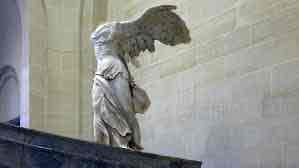
Winged Victory of Samothrace (AG)
left was reassembled, right wing was assembled by the specialist of Louvre. Nike was supposed to depict the goddess of victory congratulating sailors who have won a sea battle
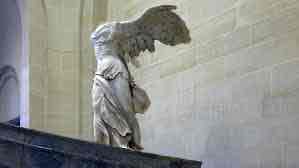
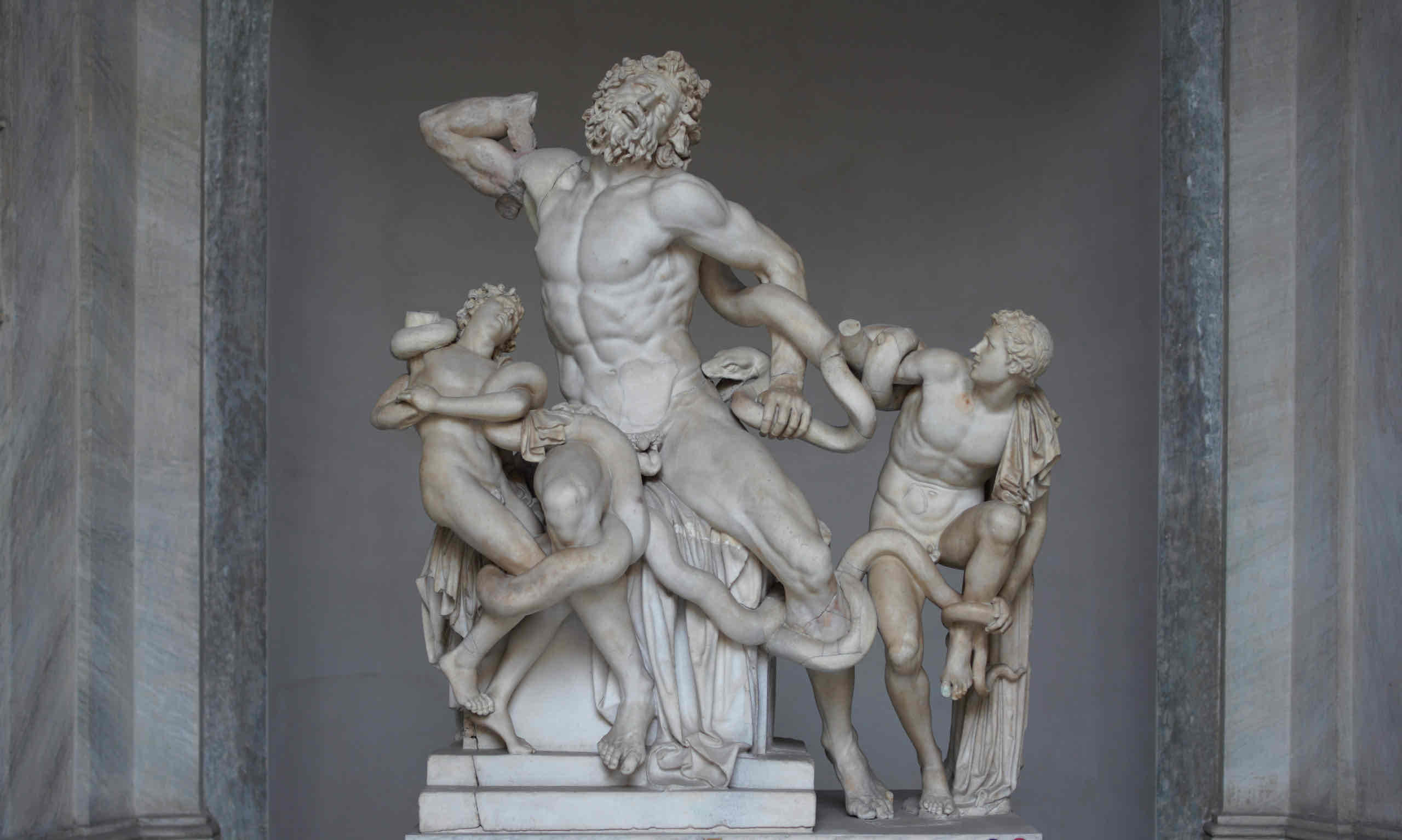
Laocoon & Sons
6ft tall, 5ft wide, made out of marble. Laocoon a Trojan priest attempted to warn the people of the trap (the horse) but Athena and Poseidon who sided with the Greeks in the war had sent two giant serpents to come and brutally kill Laocoon and his sons.
The sculpture depicts the intense struggle and agony of Laocoon and his sons as they are attacked by the serpents. It exemplifies the dramatic expression and intricate detail characteristic of Hellenistic art.

Discobolus
known for its balance, proportions and idealized human form. Depicts a young athletic male in the act of throwing a discus, which is an event in the ancient Olympic Games
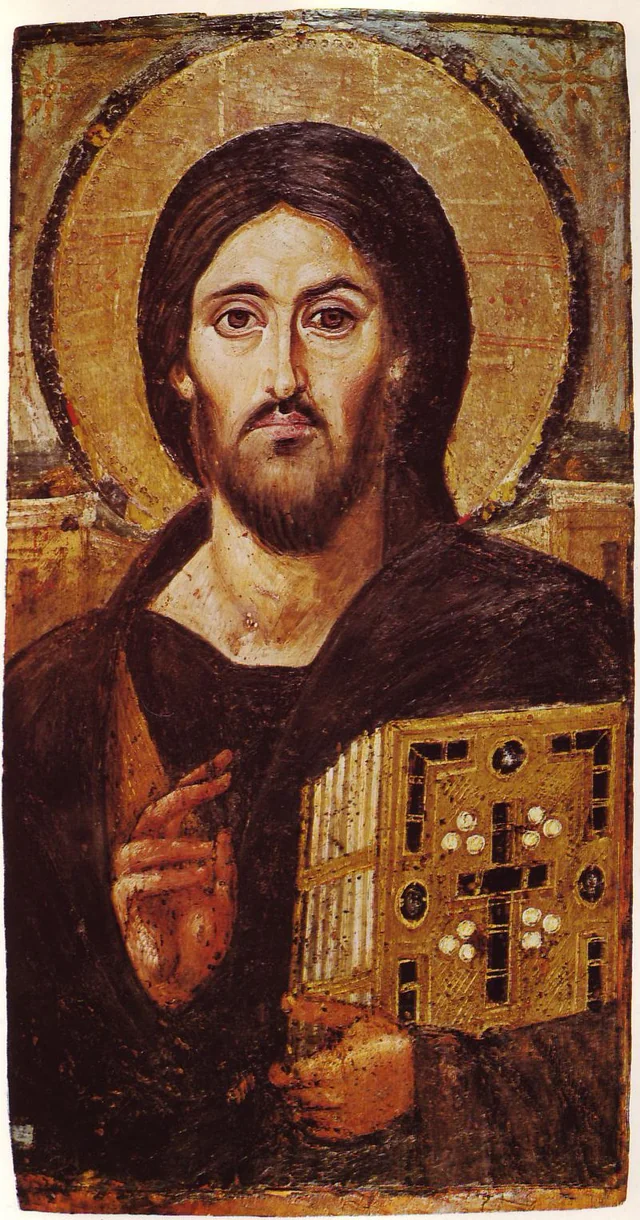
Christ Pantocrator (*Asymmetric face) (MA)
from Saint Catherine monastery (5th cen) Middle ages.
Shows the duality of Jesus: both human & divine. Right side is the realistic human side and the left is flatter and more perfect which shows he's divine side
The image emphasizes Christ's dual nature, blending realism with idealism.
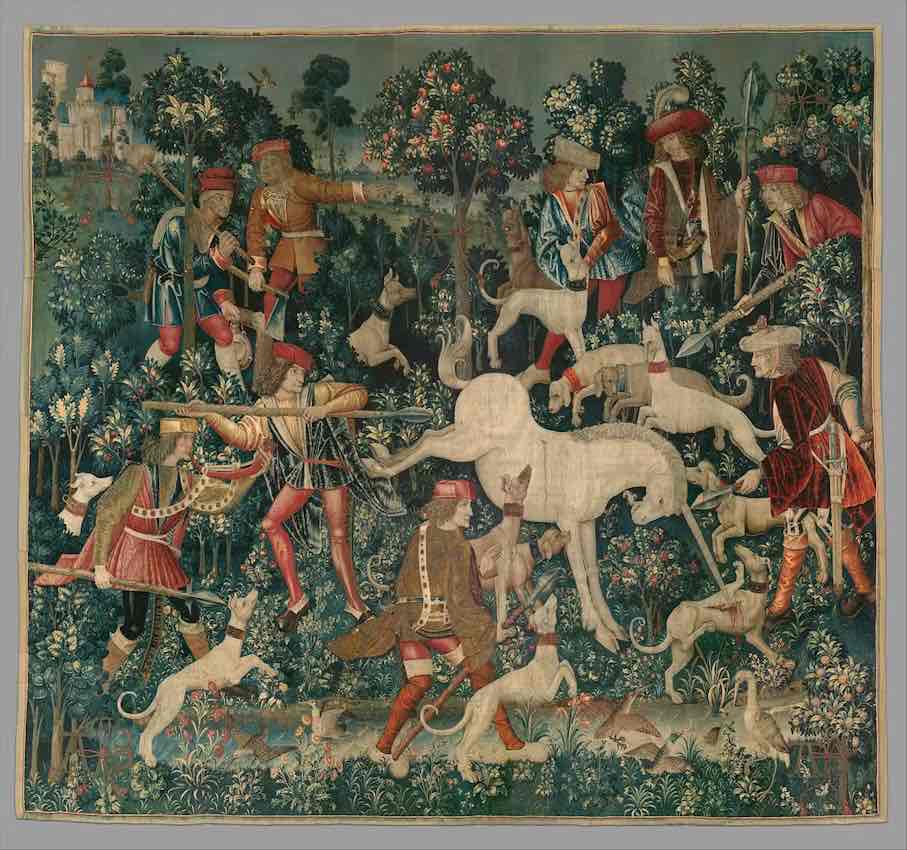
The Unicorn Tapestries Circa 1495-1505 CE
origin: Netherlands (Late Gothic) - Woven from wool, all dyes were made from plants, series of 7 tapestries depicting a unicorn in various scenarios that illustrate themes of love, nature, and chivalry. The unicorn often symbolizes purity and grace, reflecting the ideals of the time.
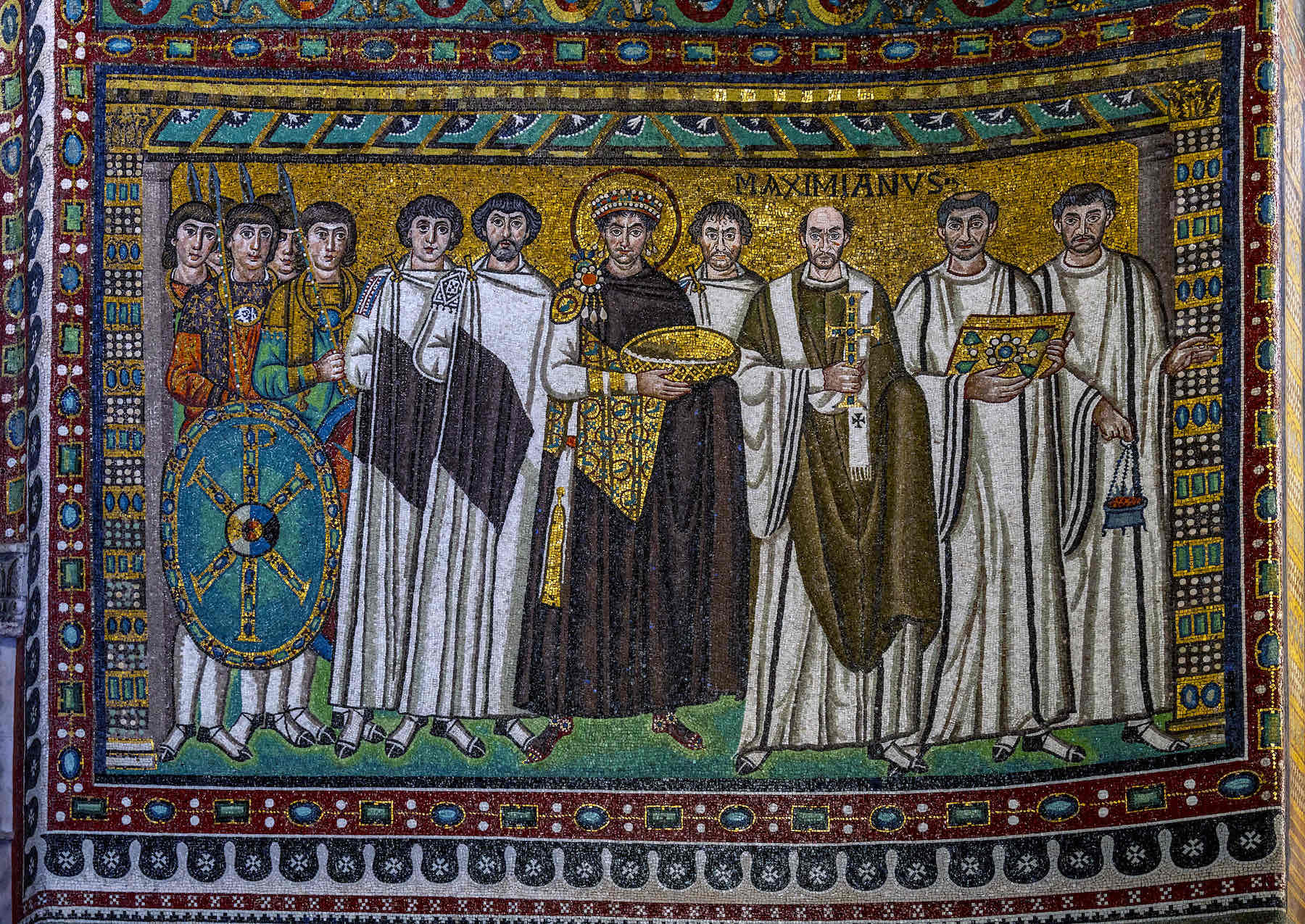
The Justinian Mosaic - Cira 540 CE
Italy (Byz) Depicts emperor Justinian
Painting made out of titles, very bright color used to create definition of features
Political scene- Justinan the ruler sends his general to reconquer Ravenna. Also wearing purple that is associated with the throne
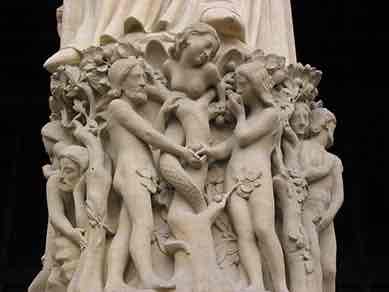
Adam & Eve Relief Sculpture - (circa 1200- 1220
outside of Notre Dame De Paris.
Serpent has the head of a woman, mirroring Eve as she was considered the source of Original Sin.
Other sculptures in this area of the Facade include: The Virgin Mary, standing on a serpent & depictions of the expulsion of Adam and Eve from Eden.
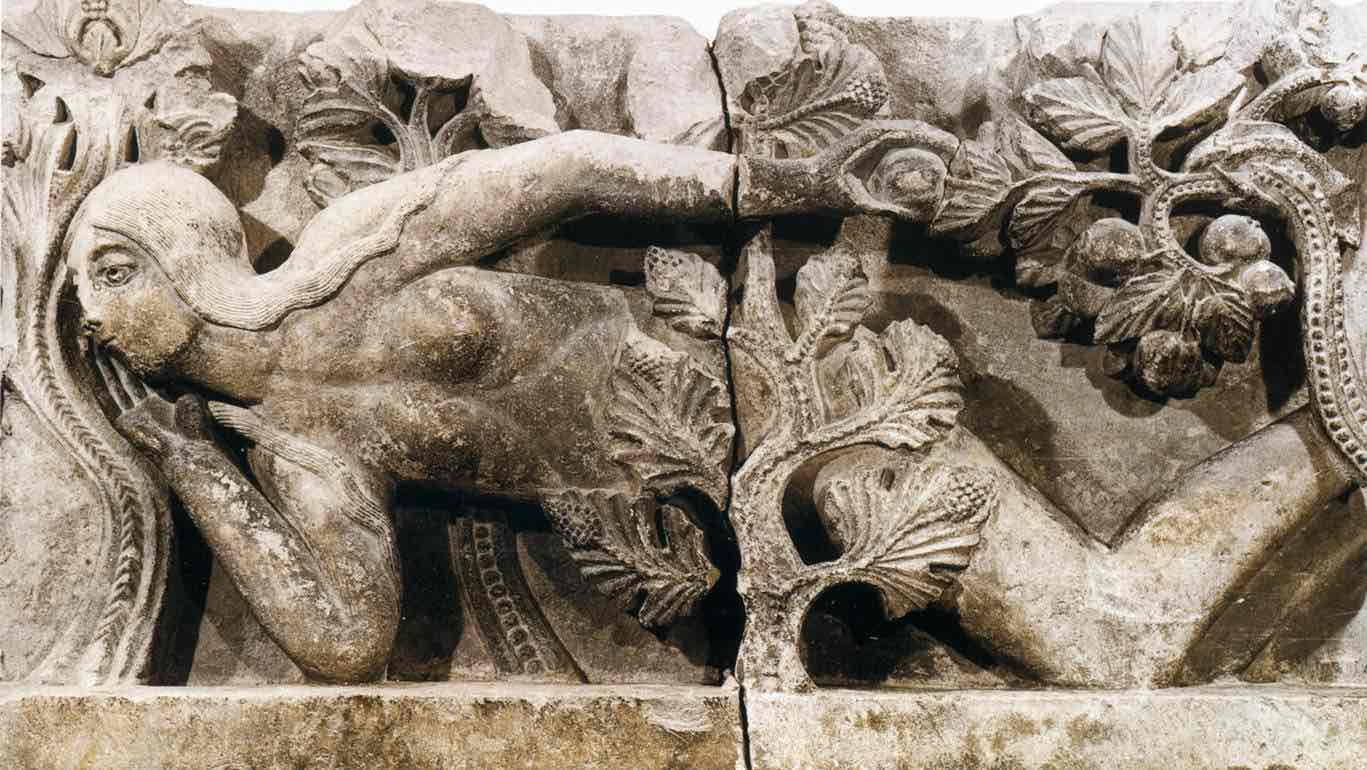
The Temptation of eve - C.1130 (Romanesque)
One of the only nudes of the entire medieval period, symbolic story of original sin almost life sized figure of Eve ( garden of eden story)
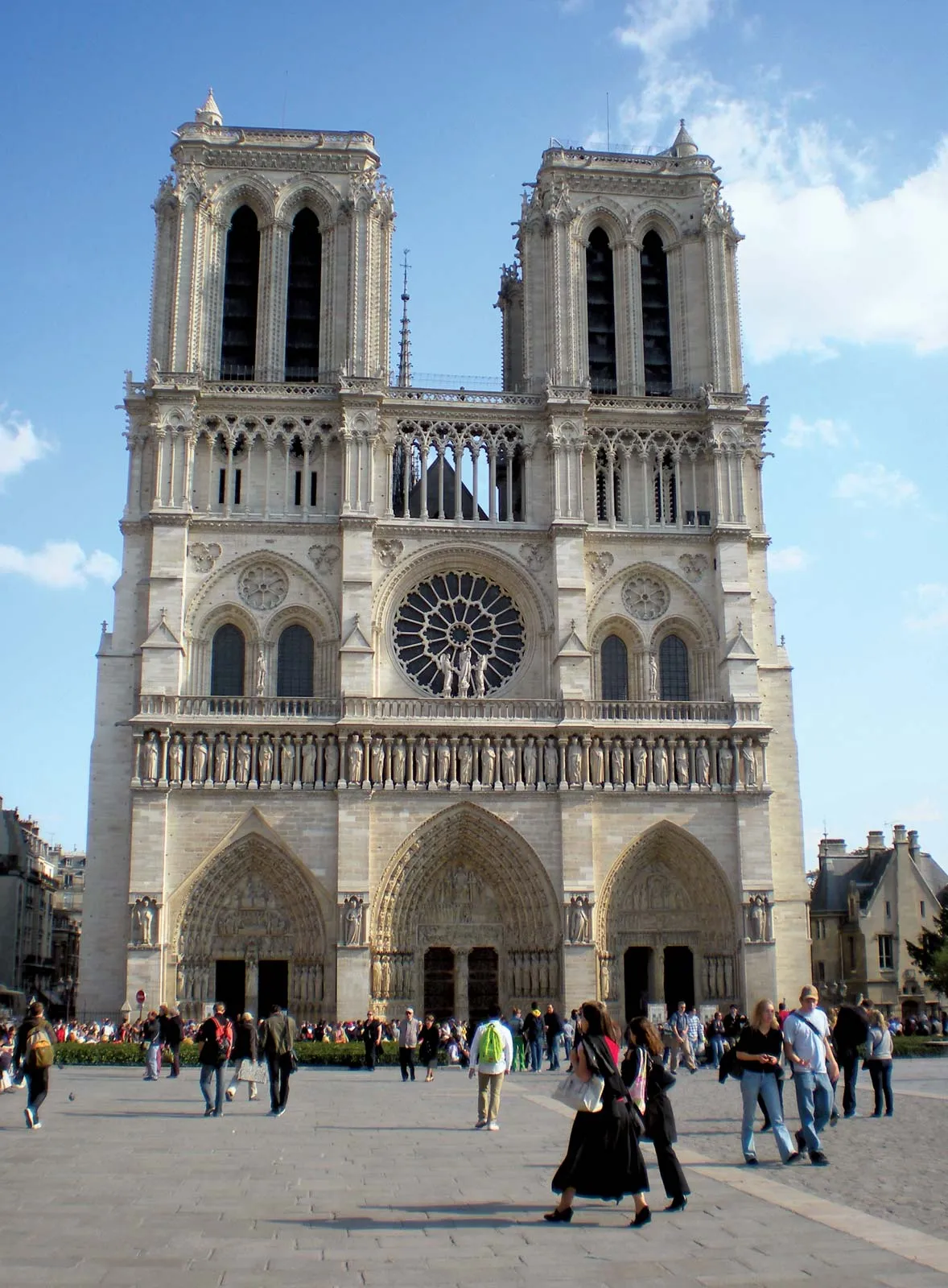
Notre Dame de Paris- (Gothic)
1163-1270 CE - one of the earliest structures to use ribbed vaulting and flying buttresses,
under restoration after a big fire,
Built on lle da la cite an island in the seine river on top of the ancient (pagan) city of Lutetia
Some interior elements were salvaged from the temple to Jupiter
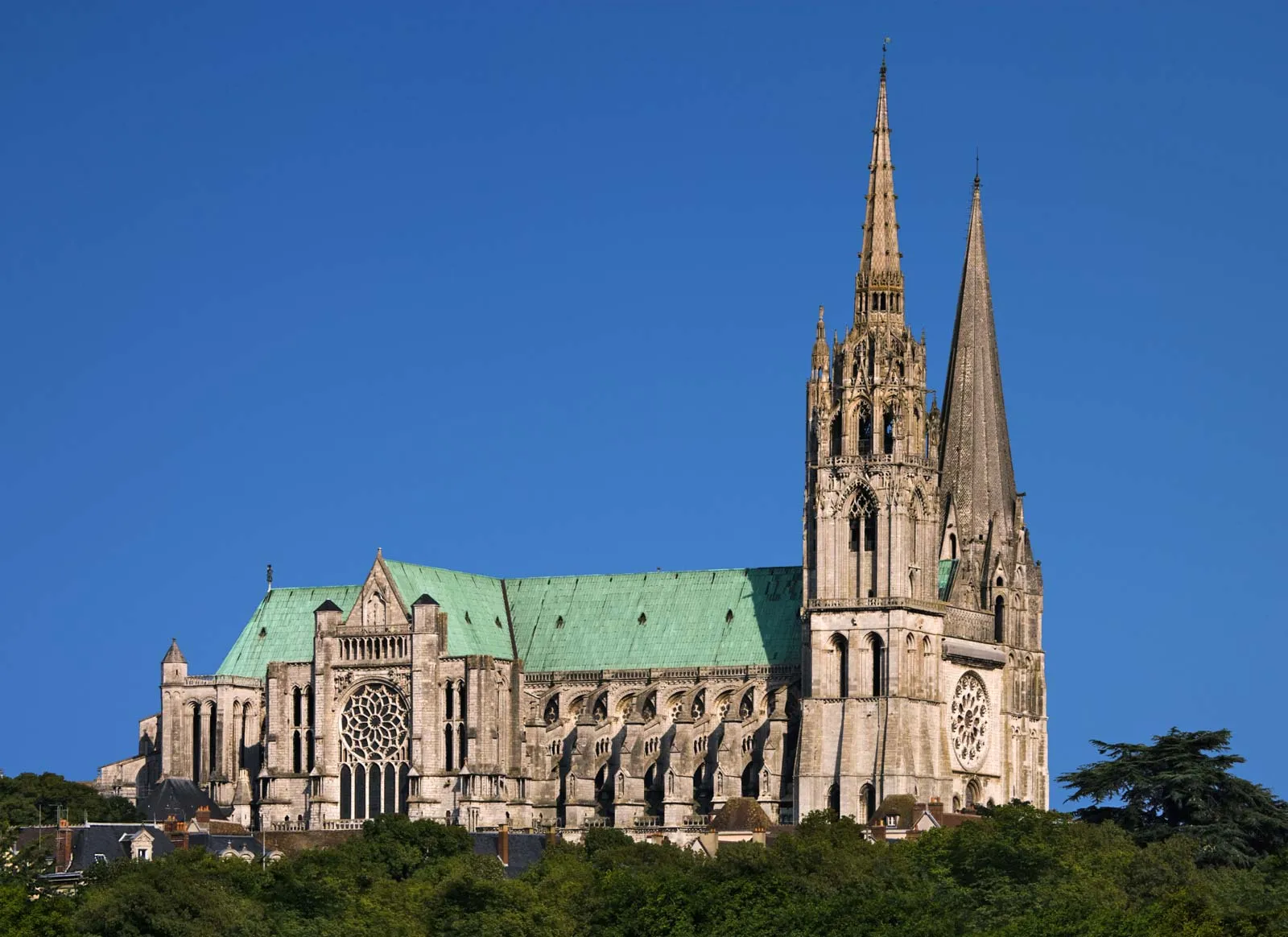
Chartres Cathedral
gothic) 1194-1220 CE-
Believed to house the relic: Mary’s tunic worn during Jesus birth Has two bells towers that showed its gothic
Nave features a labyrinthic that pilgrims could crawl through to symbolize the journey to Jerusalem.
Hundreds of figurative sculptures meant to teach church goes about the New Testament.
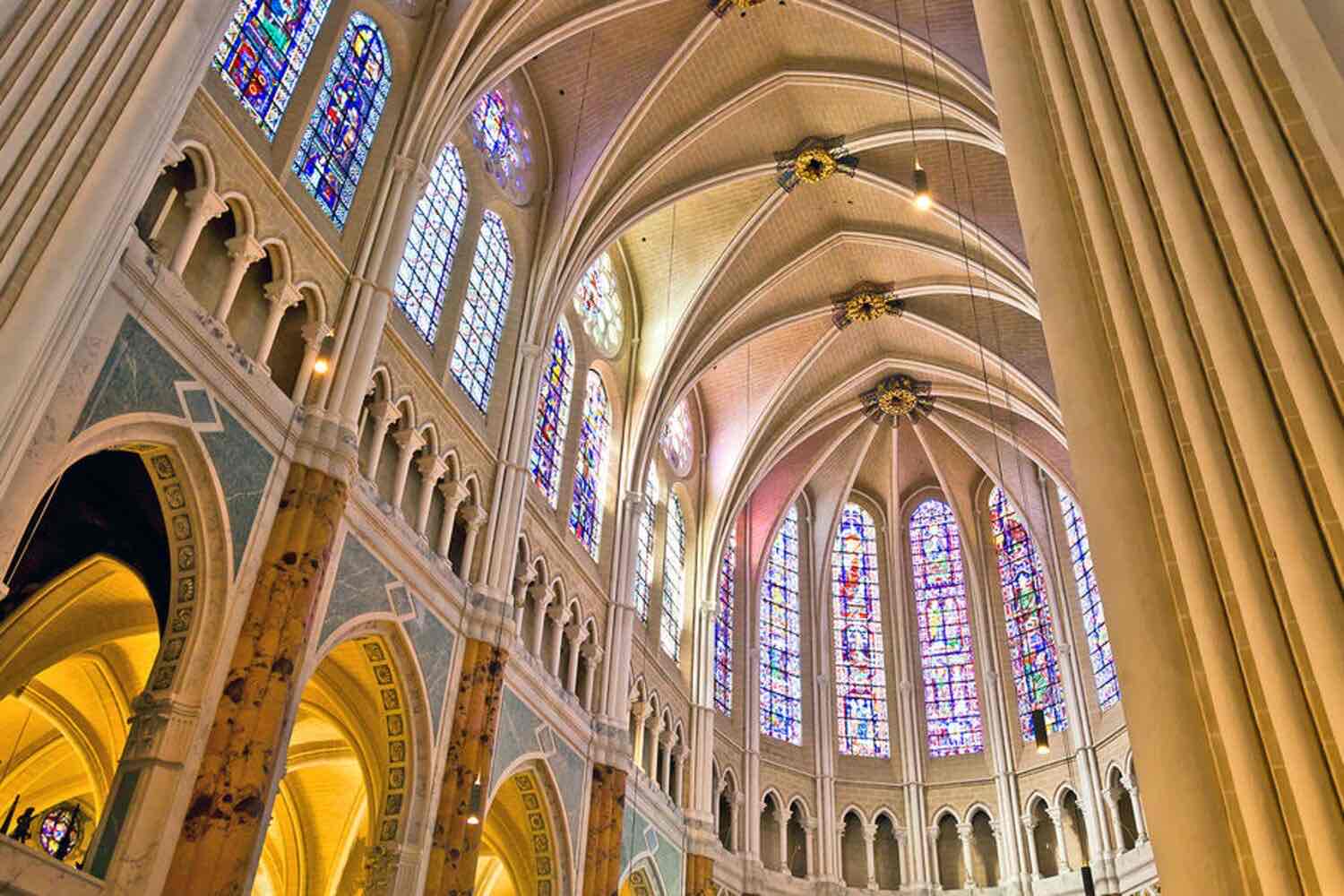
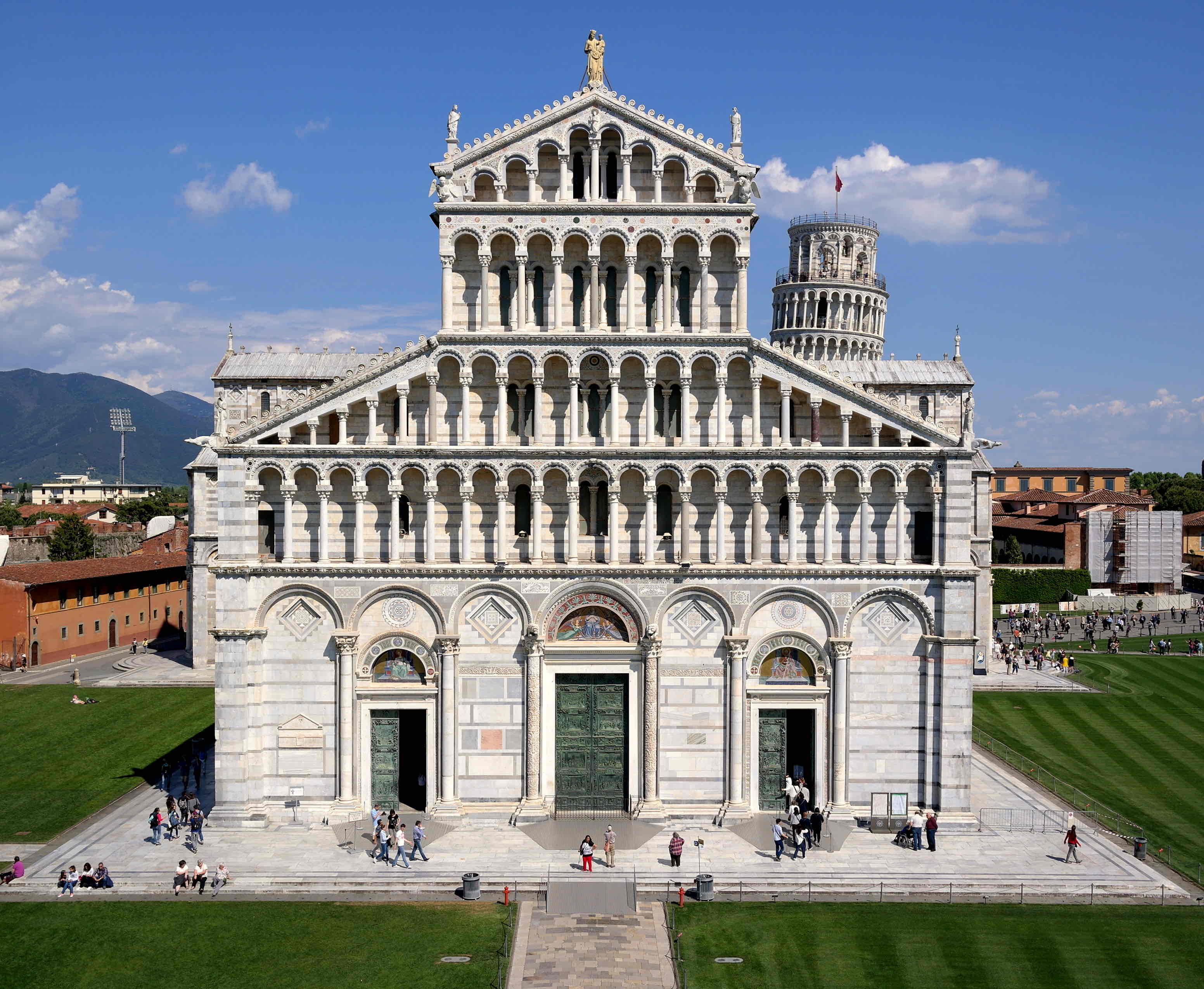
Duomo (Cathedral) of Pisa
( Romanesque)
Cathedral built in 2 stages, Features 4 levels of Loggia(covered balcony like space)
shows the power and wealth of Pisa during the middle ages.
Interior: Granite column with corinthian capitals different styles of arches reflect different countries that Pisans had trade relationships with coffered ceilings
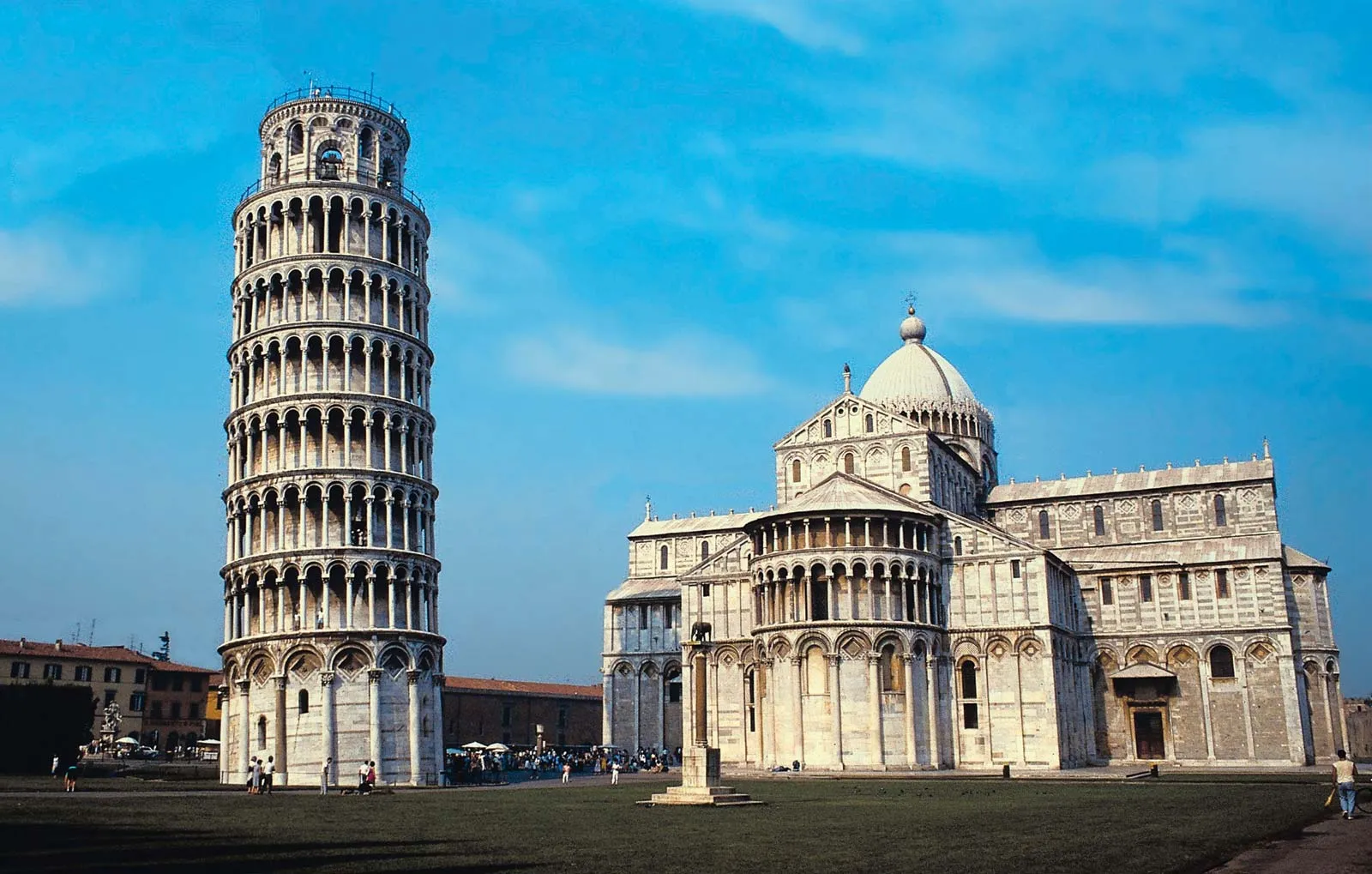
Leaning Tower of Pisa Italy 1063- 1092 CE
leaning tower began to lean almost immediately after construction began due to improper foundation, Cathedral is part of palazzo featuring additional structures: the baptistry and the campanile

Duccio Maesta Altarpiece 1308-1311
Gold tempera on wooden altarpiece. Holding the baby in a motherly way wrapping her hands around the baby to keep him comfortable.
Mary enthroned as queen is heaven surrounded by angels and saints.
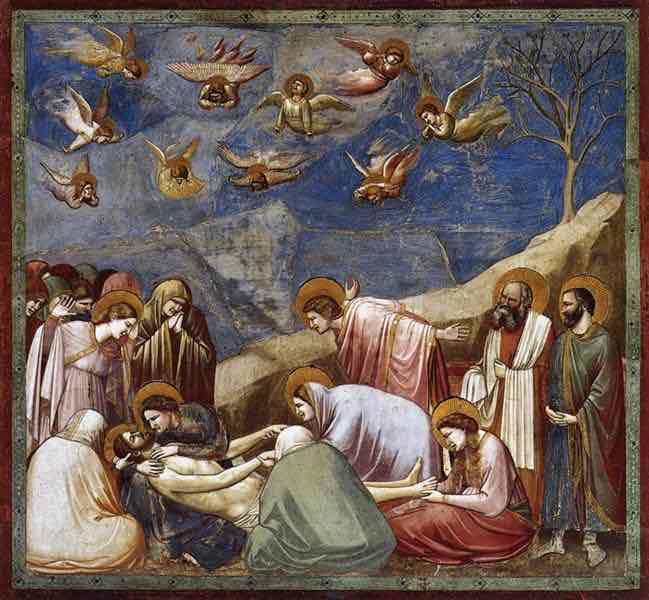
Lamentation Fresco 1304-06CE (PR)
(PR) (Giotto)
10 angels in the upper part of the painting, they are smaller figures 60% of it is the sky, the deceased man looks to be Jesus in the lower left women are surrounding him.
The one dressed in blue is Mary and there are also other women holding his feet/hands.
Many people in the lower left have halos and look sad/distressed about the death of Jesus lot of overlapping figures present,
in the middle of the artwork there is a person in green who doesn't have a halo and back is facing the viewer which is supposed to repeat the viewer ( we are a part of the painting and not just an on looker. Lots of blue, space and form, texture.

Visitation (1304-06 CE)
We see Mary and Elizabeth, her cousin Elizabeth. Both are pregnant, Mary with Jesus and Elizabeth with John the Baptist .

Faux Marble and Architecture of Scrovegni Chapel 1304 - 06 CE
- A church covered in frescos and shows different parts of Jesus life, bottom right seems to be a cliff, has a lot of overlapping which shows space.
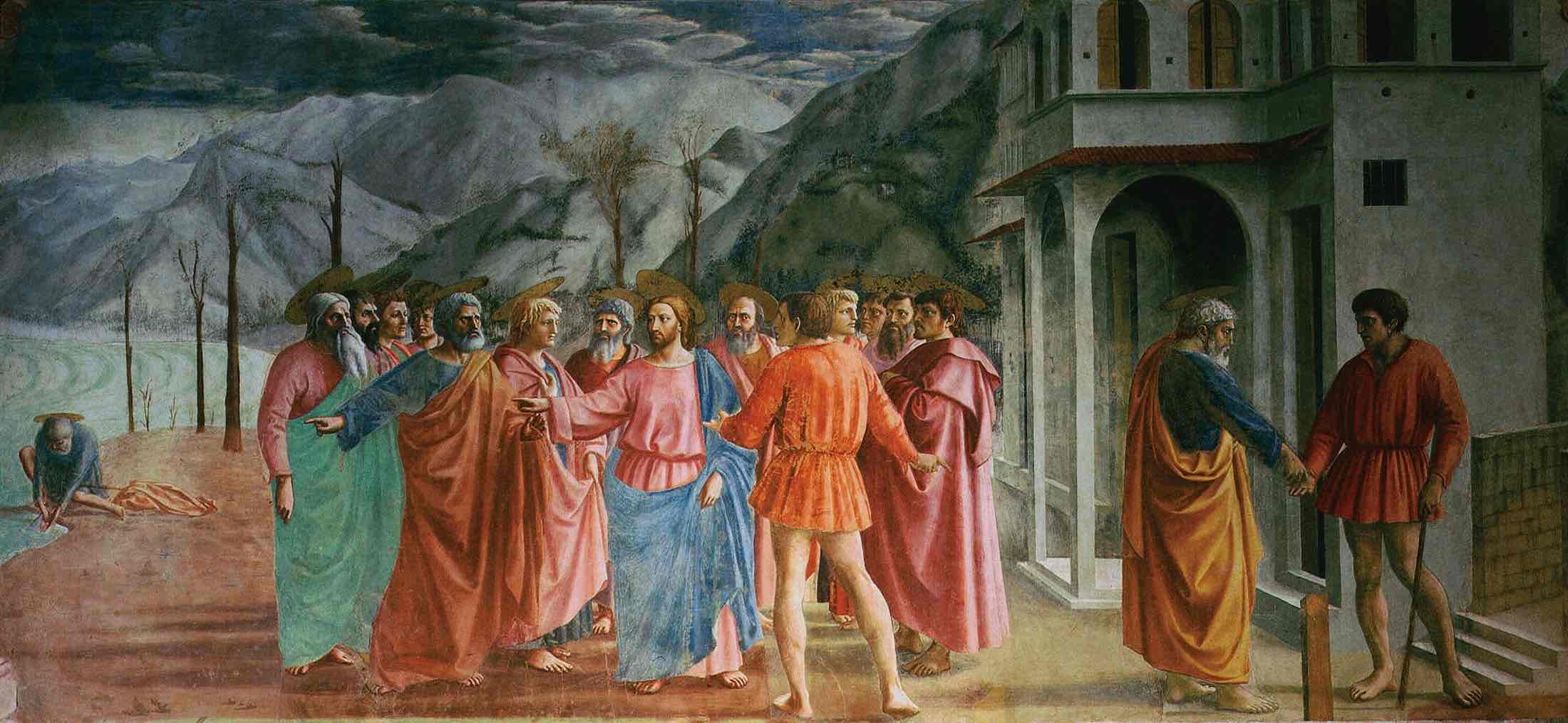
The Tribute Money Masaccio´s ( ER)
Brancacci chapel (1424) depicts Jesus and his twelve apostles.
The disciple on the left wearing the long orange robes with blue tunic is Peter, he's in the painting 3 different areas.
Once in the middle next to Jesus, two on the right talking to a man and a third on the waterbank. Halos are show as ellipse
(circle tilted in space) The orange person with no pants and no halo is a debt collector. Jesus tells Peter to go catch some fishes who will have money they need inside of his mouth to pay the debt collector. On the right Peter gives the debt collector the fish money ( peter was a fisherman before he choose to follow Jesus)
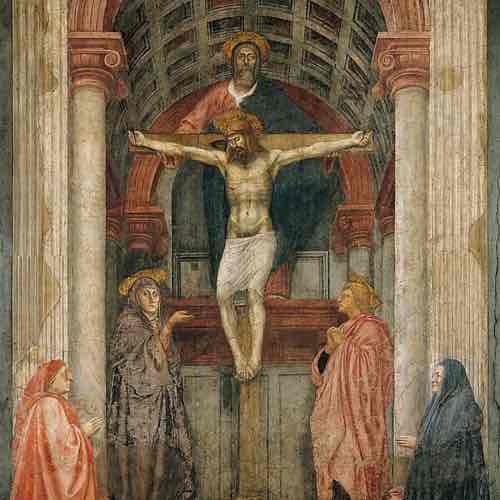
The Holy Trinity 1472 Fresco
(Masaccio) - Shows the holy family Mary in blue robes next to her is Joseph then God is behind Jesus in shadow
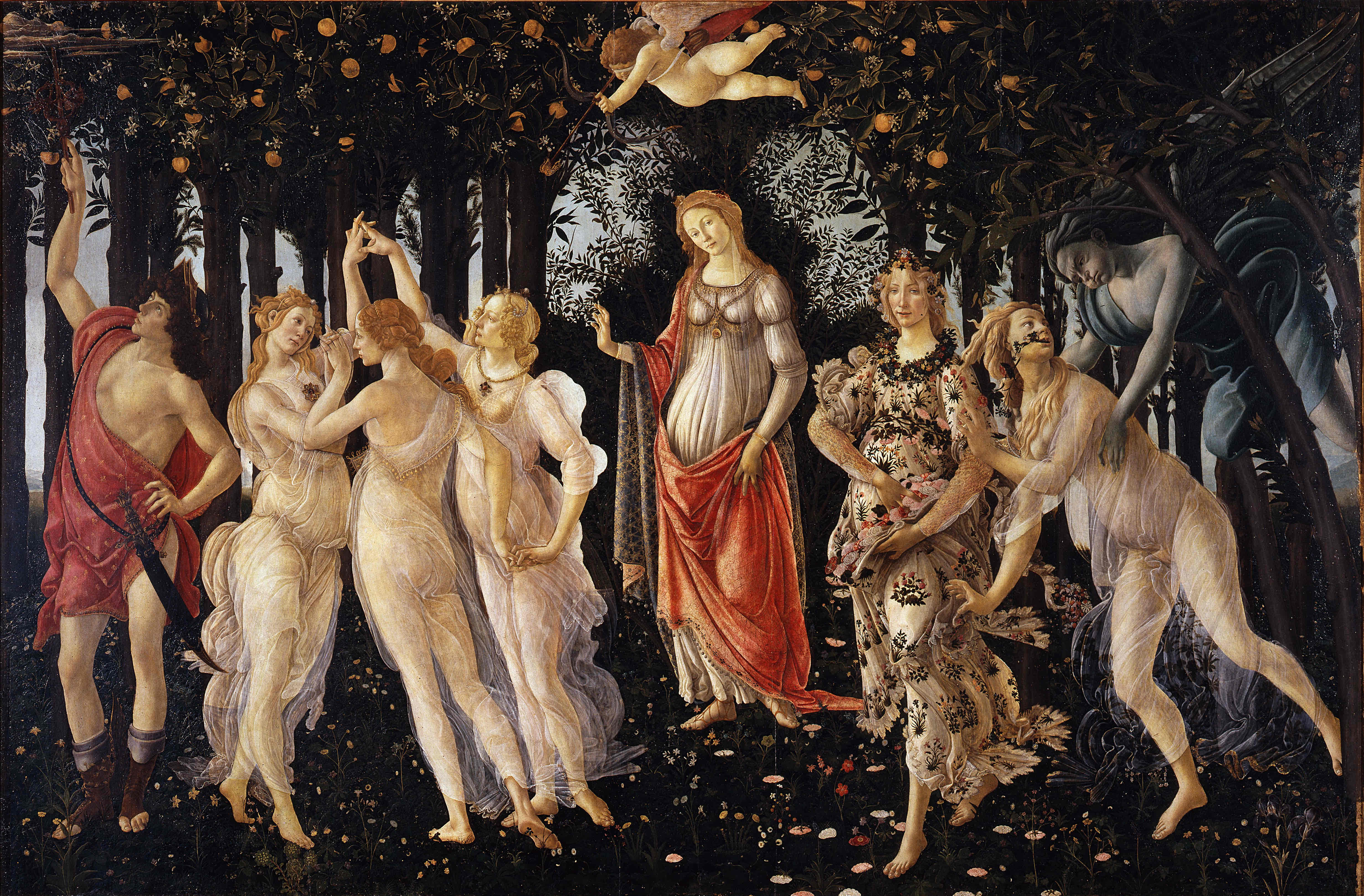
La Primavera Sandro Botticelli (1482)
Tempera , paint on wooden panel Not a painting of Christianity
La Primavera is another word for spring- Venus is the Roman goddess of fertility and represents spring - Venus is in the center
Venus looks to be Mary because of her garments
in the center are the three graces
Zephyr the god of the wind looks to be adducting Chloris who is associated with flowers and new growth then next to then is Flora the goddess of spring
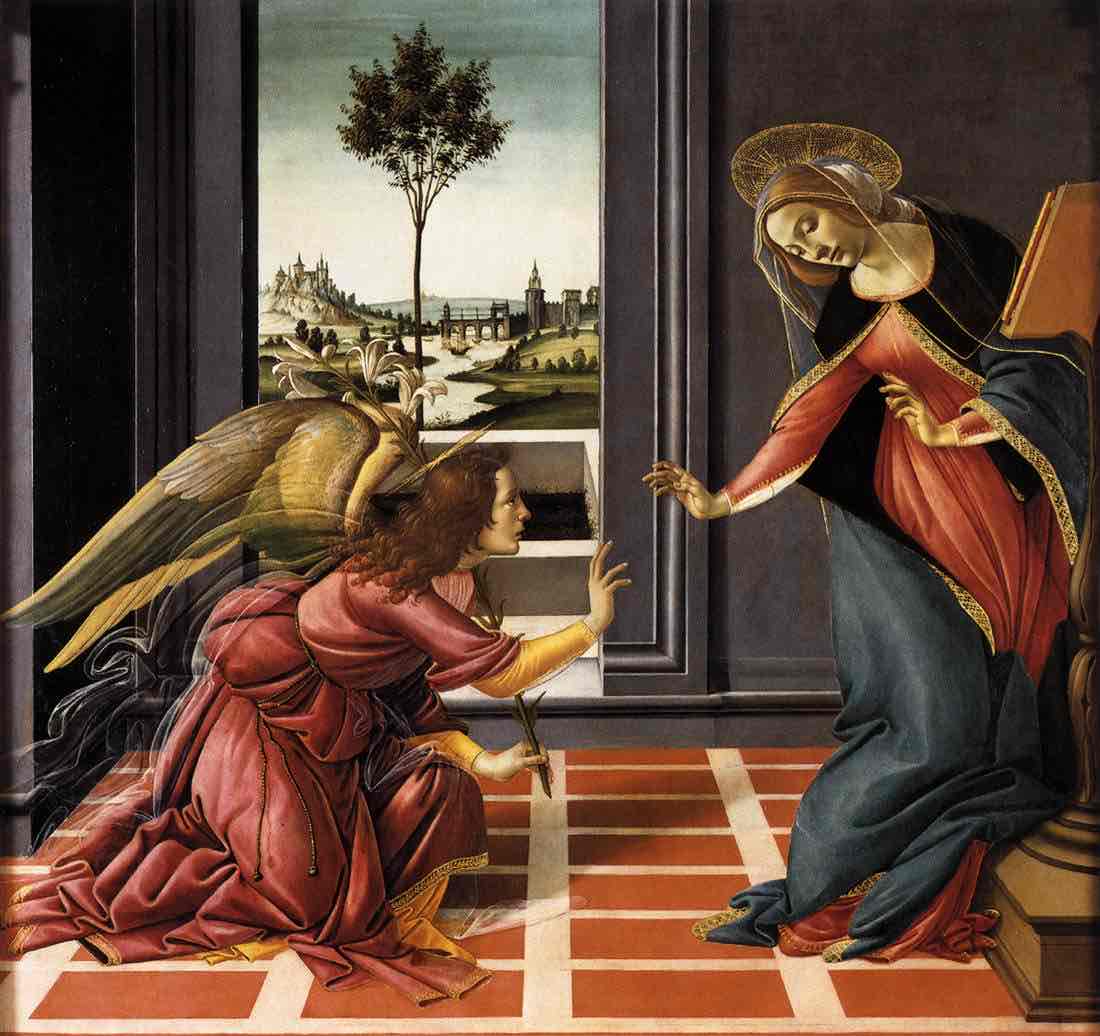
Cestello Annunciation (Botticelli)
Tempera on Panel. Mary is shown with Gabrial bowing down. Gabriel is there to tell Mary she has been chosen by God to bear his child. You can tell its Renaissance because of the way their halo are shown.
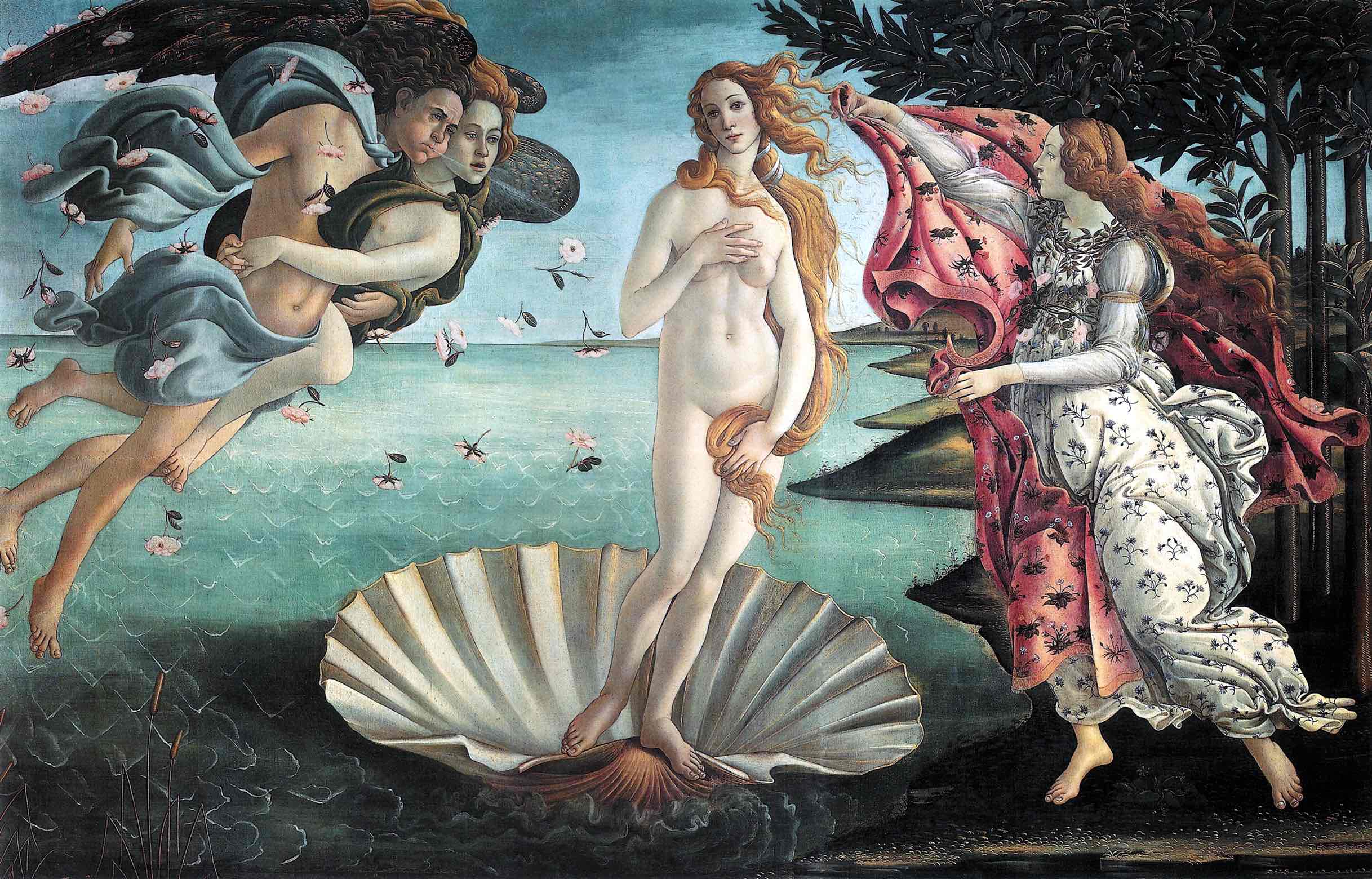
Birth of Venus
Botticelli
1485 AD tempera on panel. First female nude since Roman times. Venus is in the middle with flora on the right side and on the left we see Zephyr and Chloris. Flora looks to be trying to cover Venus up and Zephyr can be seen blowing the cape away.
Venus emerging from the sea and arriving on the island of Cyprus
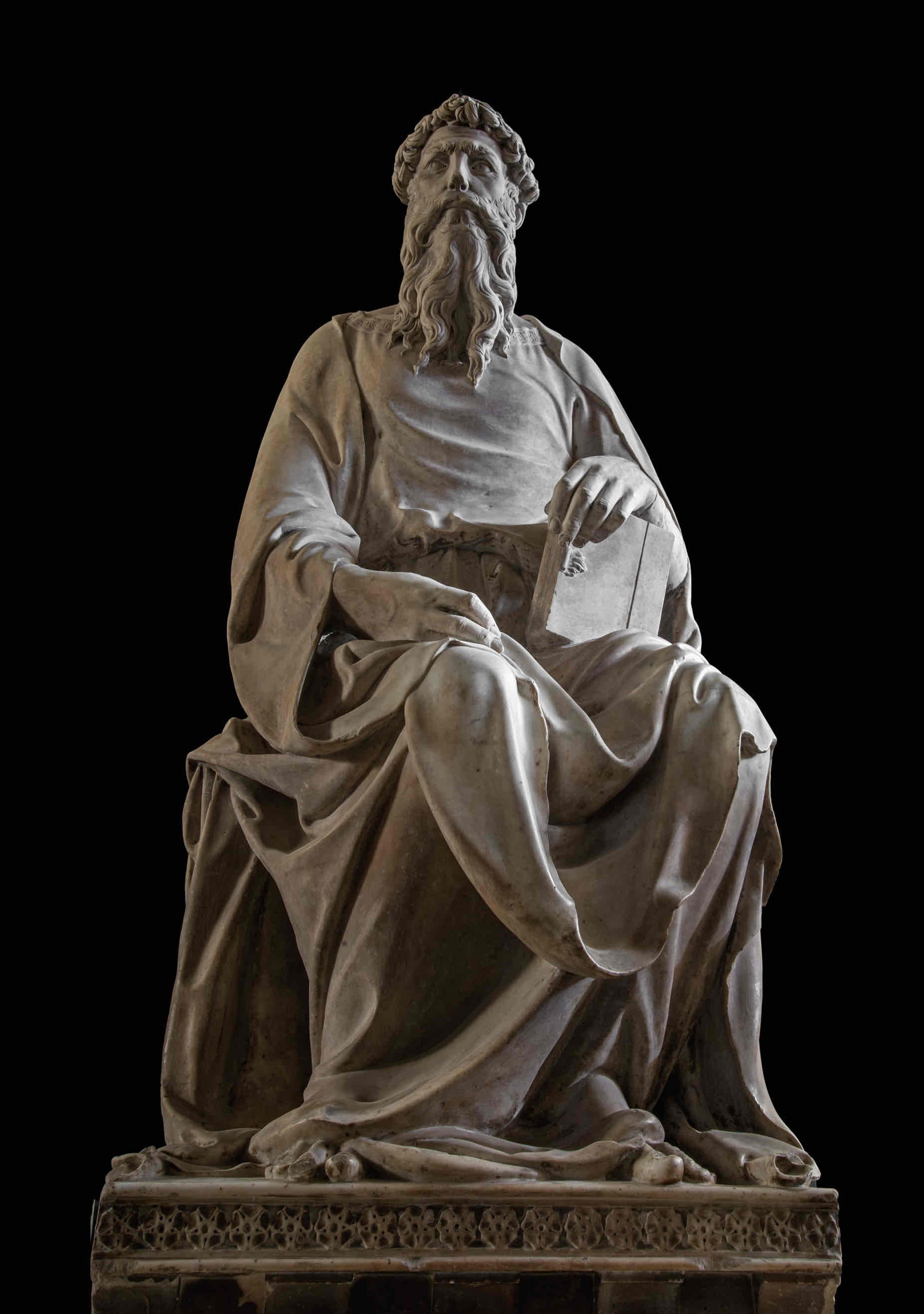
St. John the Evangelist *Sculpture
Donatello
1410- 1443. Carved in marble HUMANIZED Features, Accurate Perspective of LEGS, STABLE PYRAMID COMPOSITION.
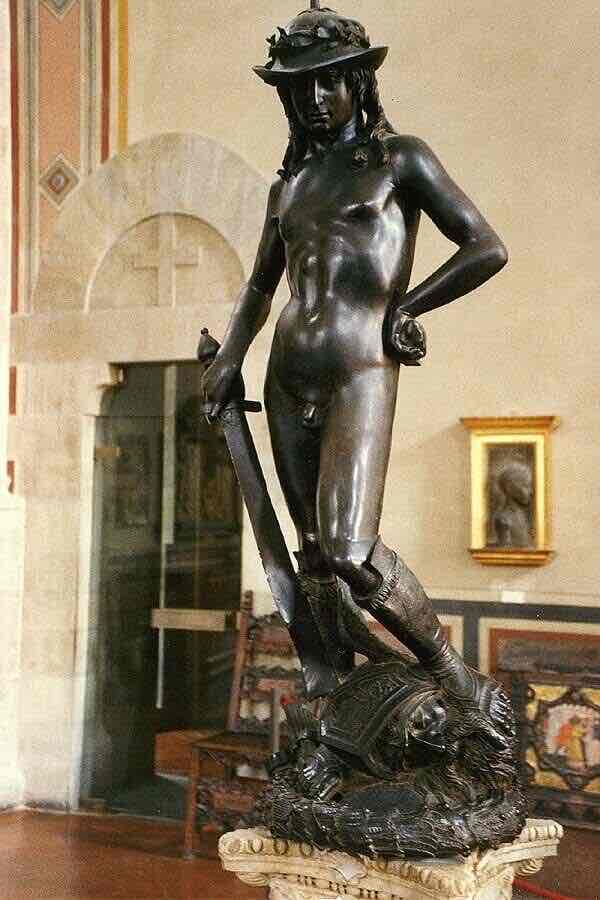
David *Sculpture
Donatello
1440 - 1443 - made out of bronze. Tells the story of David and Goliath -> David is a slim ( almost looks like a girl ) shepard who defeated the giant Goliath with the help of God. This marks the return of Greek/ Roman traditions. CONTRAPPOSTO. It is hollow and created through a technique called lost-wax casting. This sculpture is important to Florence because they had also identified themselves as a small dog who defeated giant enemies of their own with the Medici family and a monk named Savonarola. Found in the Medici family's garden before they were run out.
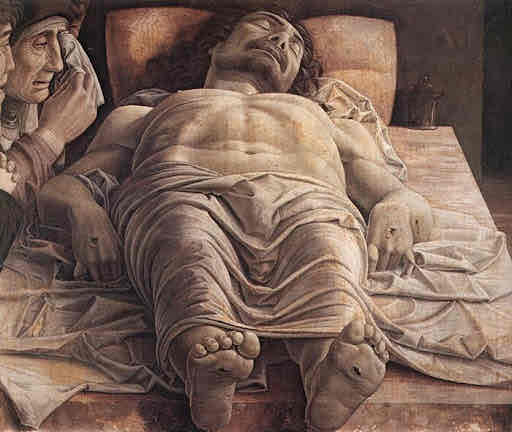
Lamentation of Christ (HR)
Mantegna 1483 tempera paint of panel. Famous example for foreshortening. We see a halo as we look at his head, Jesus looks at peace after his suffering. His wounds look dried up, we ALSO WE SORROW IN THE EYES OF THOSE PRESENT, more invited to put ourselves into the painting so that we are a part of the story. Mantegna lost two sons so this is thought to be a personal painting.
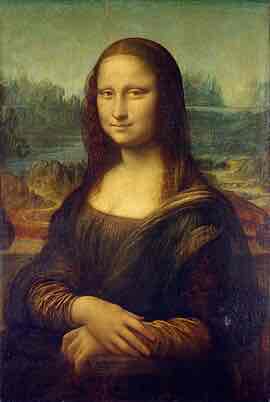
The Mona Lisa
Leonardo Da Vinci - oil paint on panel -> sfumato (oil painting technique).
Famous for its mysterious smile, shoulders are slanted. Was hung in Napoleon's bedroom before it made its way to the Louvre.
A portrait of Lisa Gherardini, a merchant's wife.
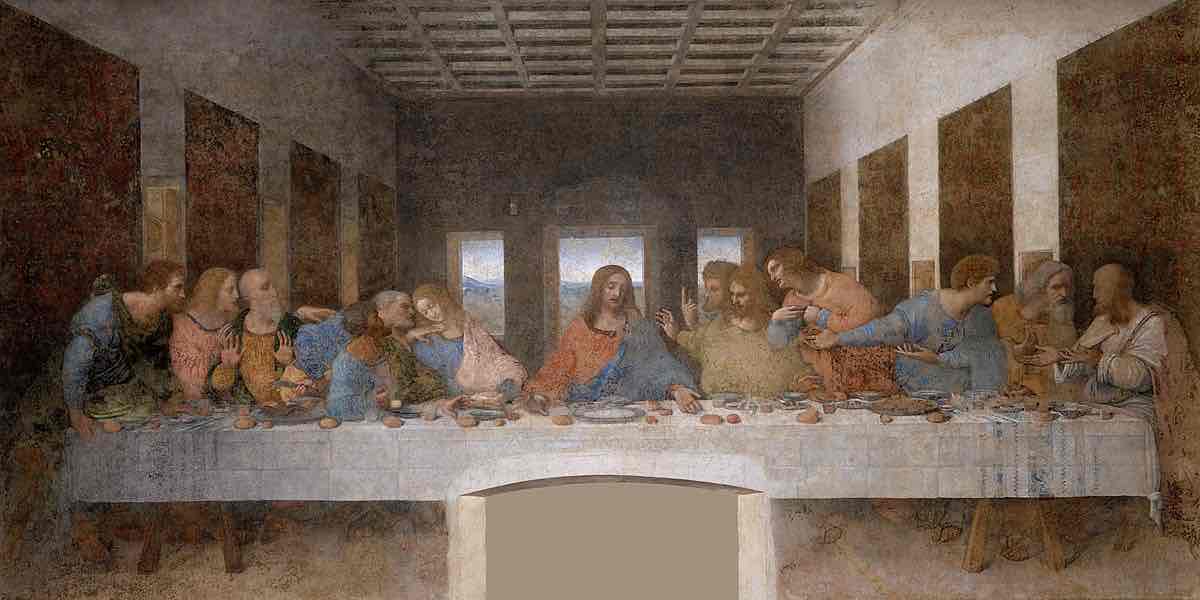
The Last Supper
Leonardo Da Vinci - Dimensions 350 x 180 in.
Marks the institution of the sacrament of holy communion.
shows Jesus and his twelve apostles.
Jesus tells his apostles that one of them will betray him
Judas is wearing red, blue, and green and is in shadow, looking withdrawn and taken aback by the sudden revelation of his plan.
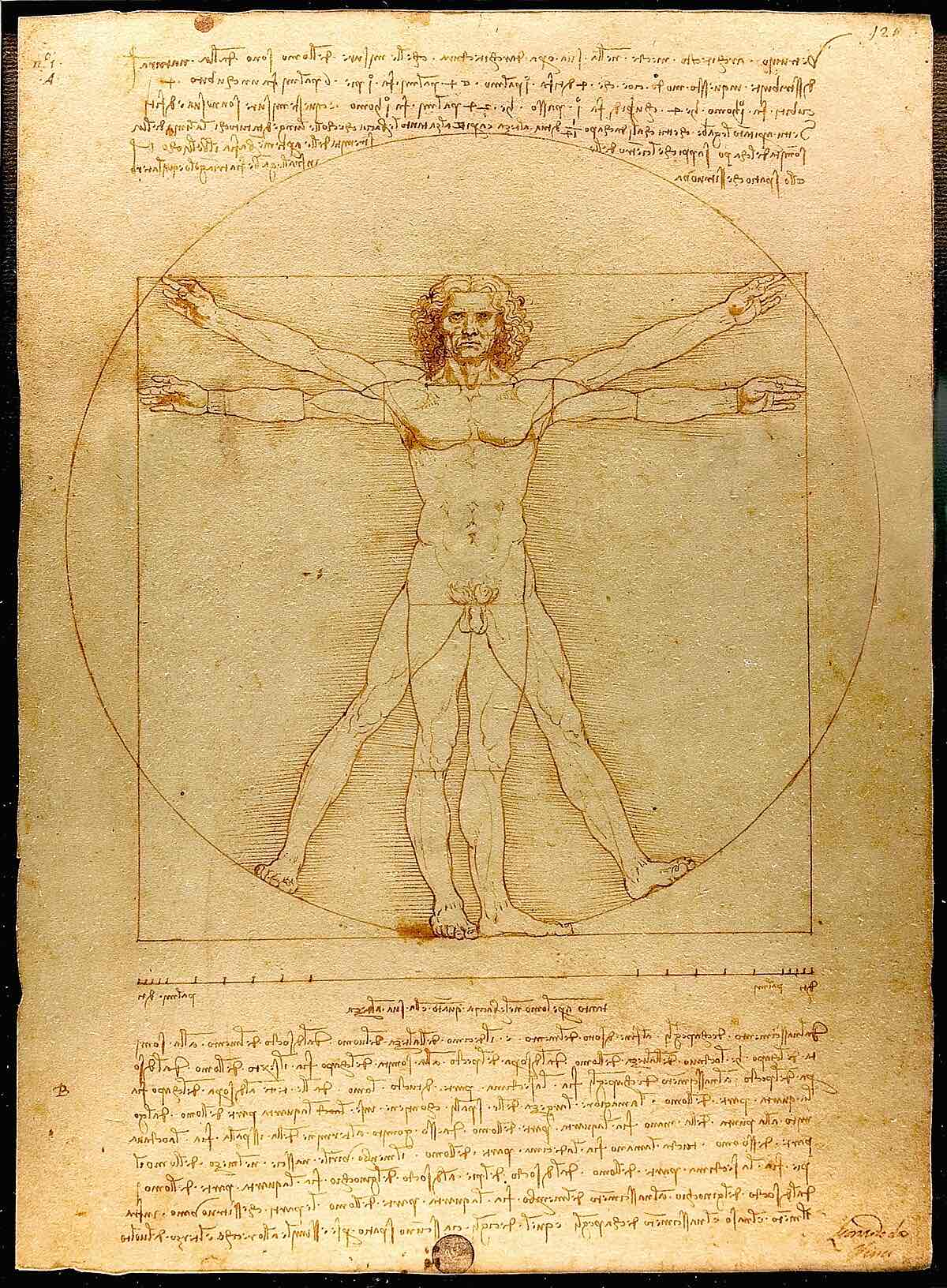
Leonardo’s Sketchbook
they are drawings on paper. They are evidence of Leonardo's interest in invention and science, as most were done as drafts or prototypes for things that he had dreamed up/invented.
Vitruvian Man (c. 1490) - shows Human Proportions, has perfect ratios and proportions, found in human anatomy.
Invention of an Armored Vehicle (c. 1487-89)- vehicle has a number of light cannons arranged on a circular platform with wheels that allow for 360-degree range.
Fetus in Utero (c. 1510-11) - Leonardo depicted the uterus with one chamber, in contrast to theories that the uterus had multiple chambers which many believed divided fetuses into separate compartments in the case of twins. Leonardo studied human embryology with the help of anatomist Marcantonio Della Torre and saw the fetus within a cadaver
Flying Invention/ Wings(c. 1485) - He had over 200 drawings and sketches that illustrated his theories on flight. His ornithopter flying machine was an aircraft that would fly by flapping its wings, a design he created to show how humans could fly.
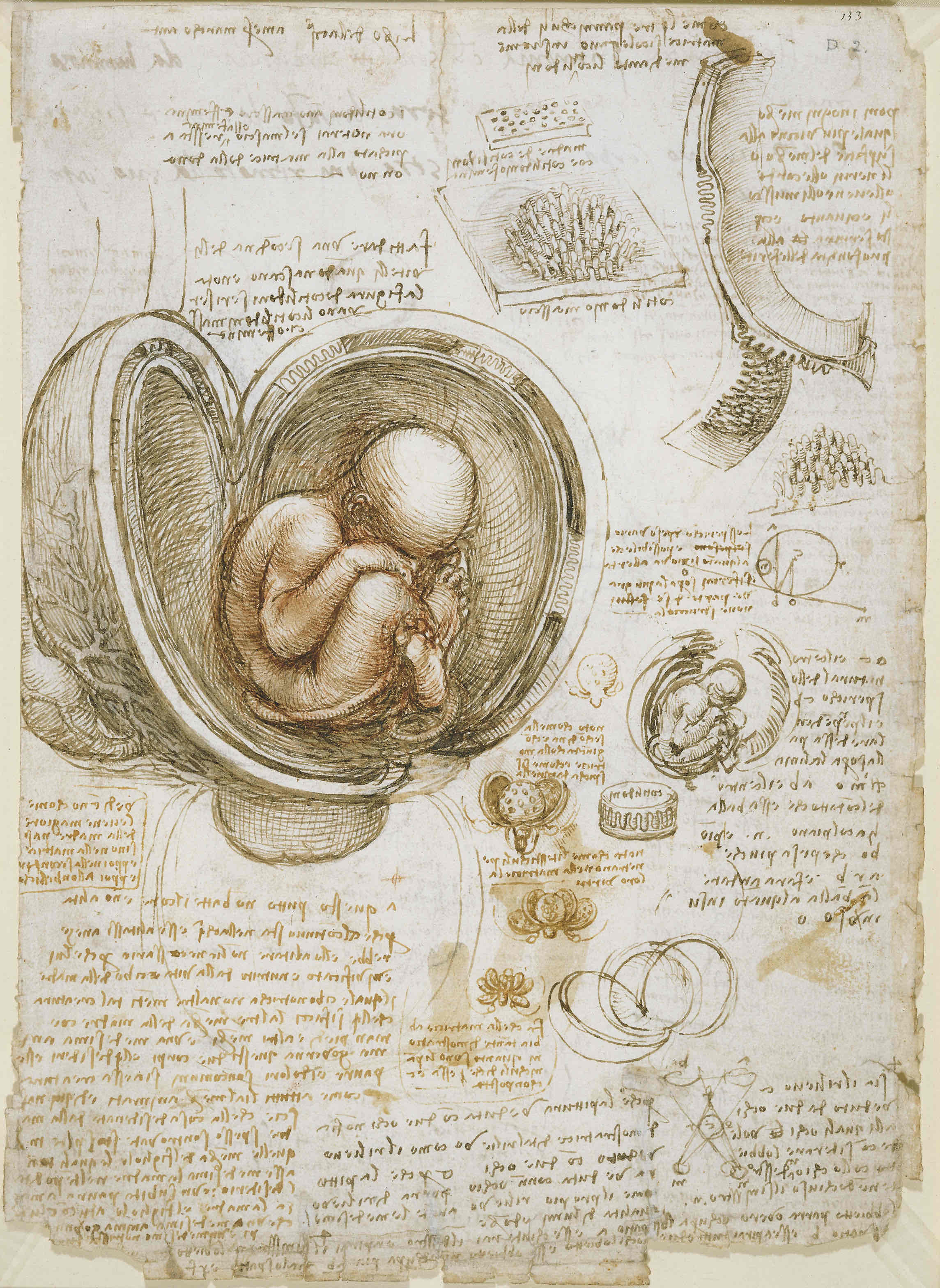

Pieta
Michelangelo (1475- 1564) -
Bacchus led to the commission of Pieta.
Michelangelo was 23yo when he was commissioned. The way she holds his body is believable and graceful. In Latin it means pity.
It represents the sixth sorrow, the Madonna’s Lamentation of Christ.
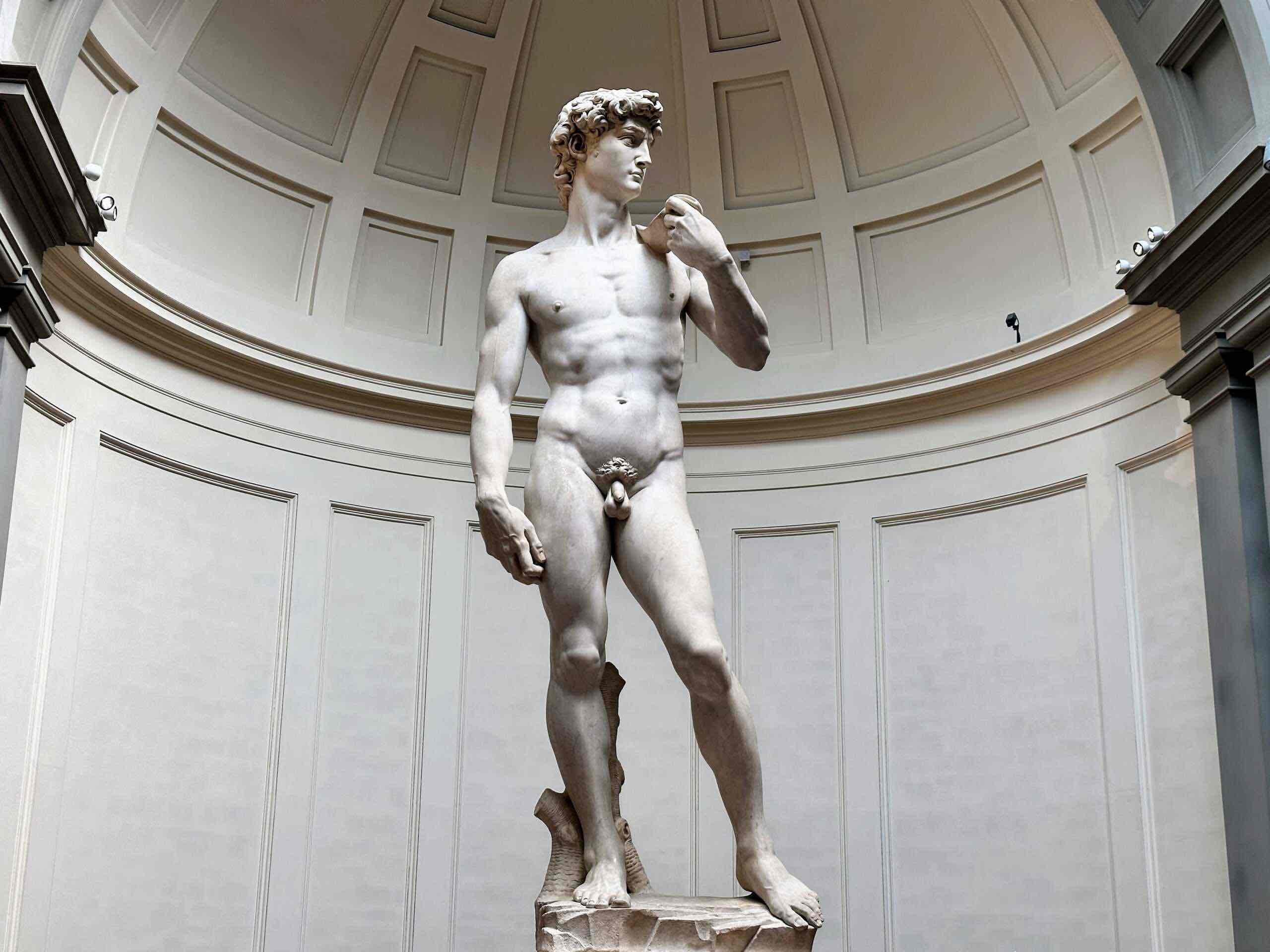
David
Michelangelo
This sculpture is important to Florence because they had also identified themselves as a small dog who defeated giant enemies of their own with the Medici family and a monk named Savonarola. Intensity of expression and emotional realism. The sculpture is so big because it was meant to be placed up on a Cathedral.
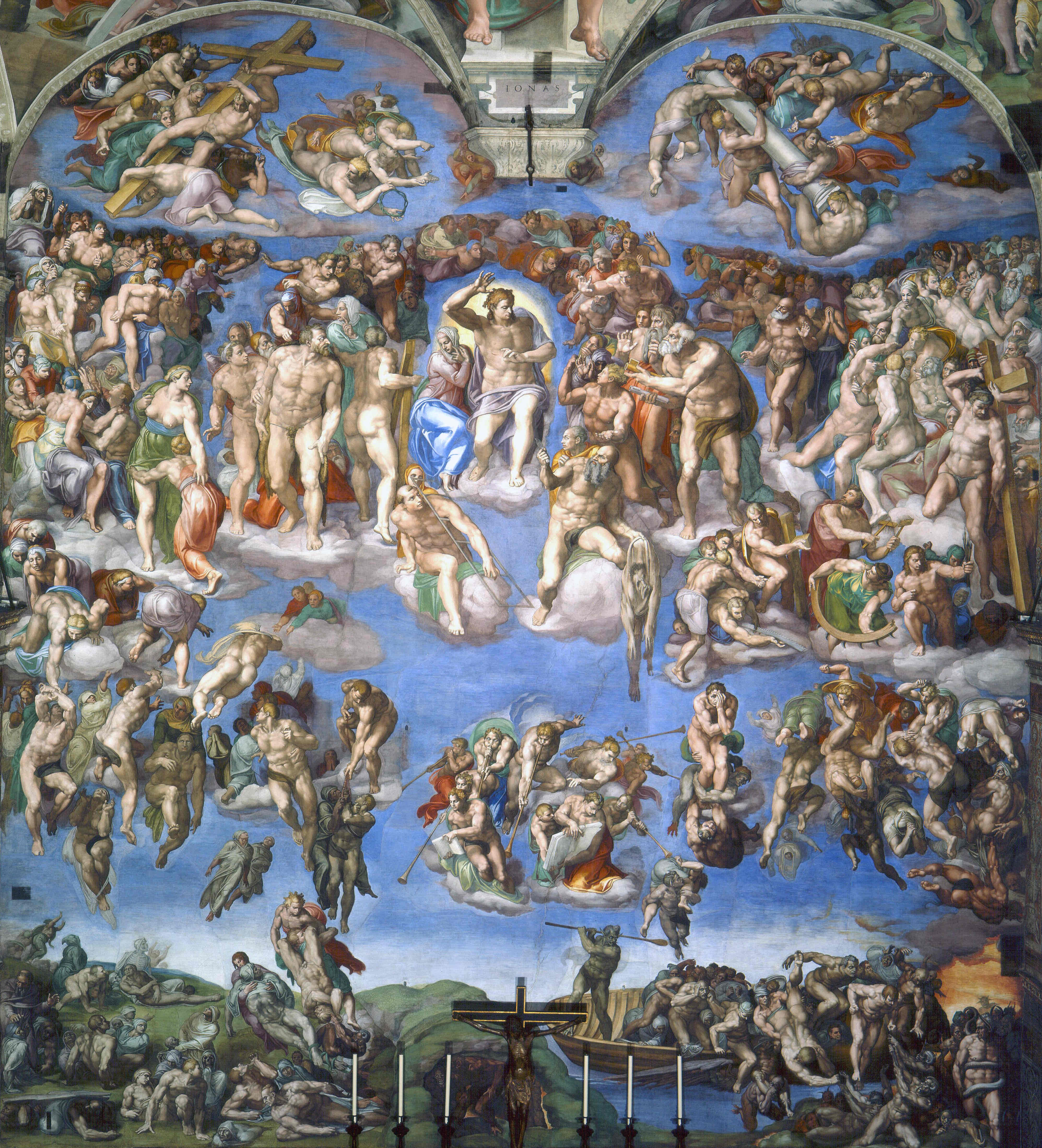
The Sistine Chapel & The Last Judgment
Fresco (1536-41) long torsos, overall message is the rise and fall for mankind.
Depicts over 300 figures. Jesus and Mary are in the middle.
Many saints can be identified with the objects they are holding in their hands.
Commissioned by Pope Clement VII.
Michelangelo used almost no assistants while painting this. Most say that he painted himself as St.
Bartholomew skin which shows his contempt for being commissioned.
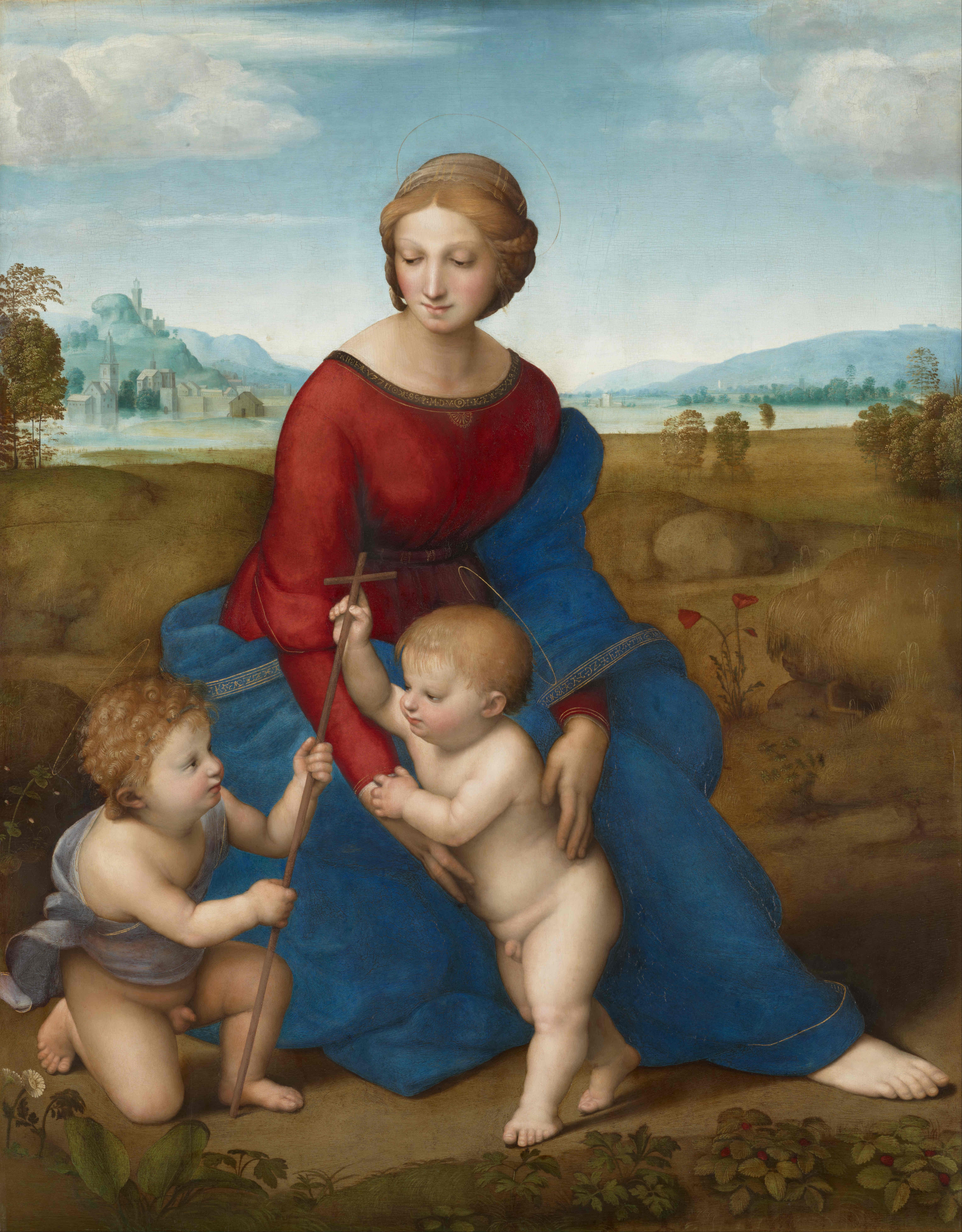
Madonna del Prato
Raphael (1505) oil paint on panel. Mary is seen in blue below her is Jesus and next to Jesus is St. John. Jesus is not cradled and Mary’s hands like in typical Madonna’s. Jesus seems to be learning how to walk, the stick cross represents a staff and shows Jesus is different. Madonna’s in a meadow, which looks like she’s more reachable. There is a lack of halos.
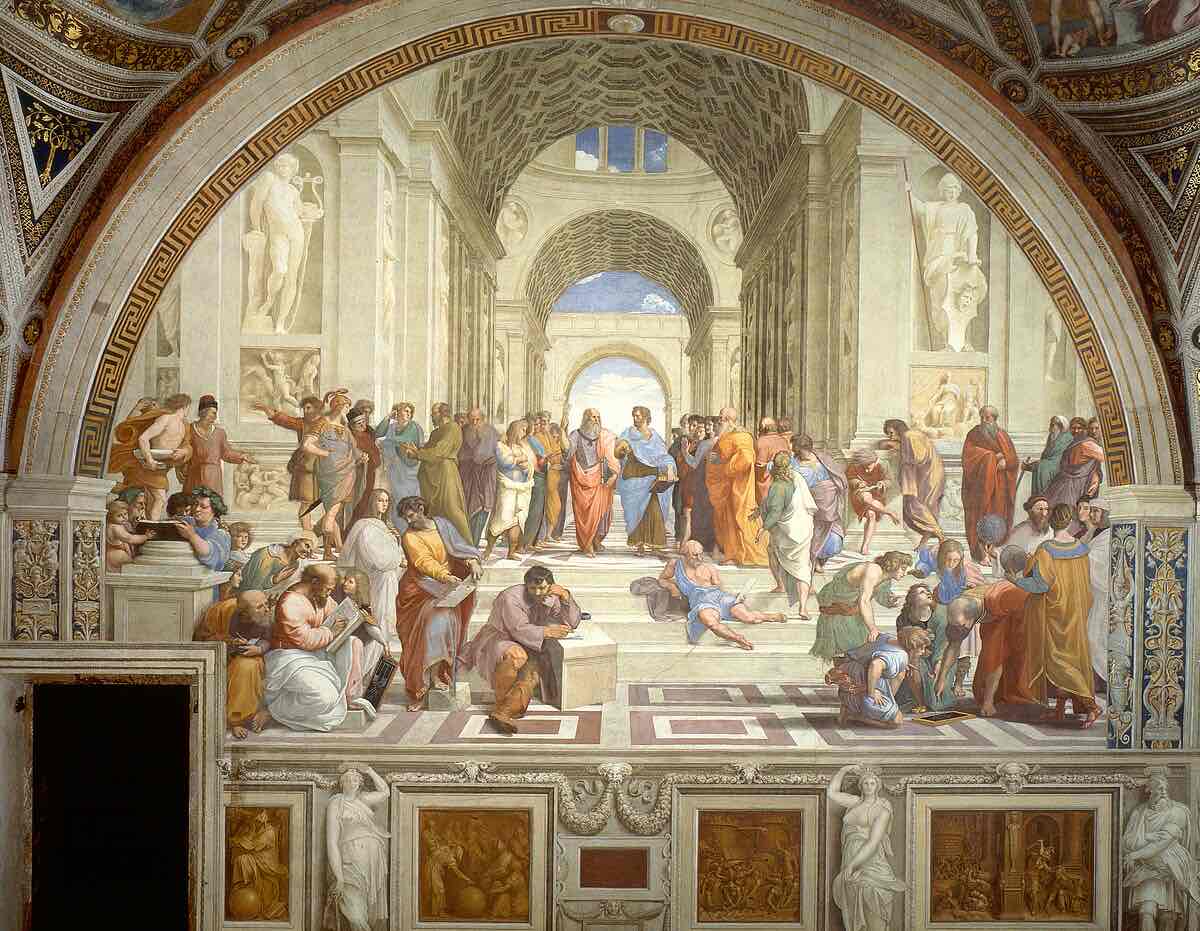
The School of Athens
Raphael (1508-11) -
originally in a library part of the papels apartment this painting represents human knowledge and philosophy commissioned by Pope Jullius II.
In the center We see Pluto and Aristotle both holding their own books. Pluto wears red and purple purple referring to spirituality and red to fire.
Aristotle wears blue and brown, the colors of earth and water.
In the niches we see Apollo and Athena. Painted Michelangelo and Heraclitus.
Raphael also included himself In the painting looking at the viewer and standing next to important astronomers
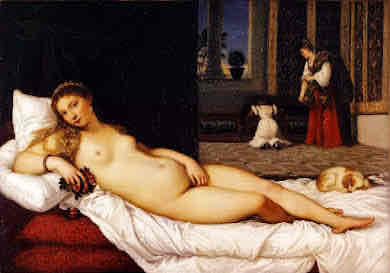
Venus of Urbino
Titian oil on canvas -
Not representative of a specific person (unknown identity of model).
Theme: Sensuality & beauty of the female body. Her GAZE is direct & comfortable.
Glazing technique allows for all to TEXTURES to add to the sensuality.
Titian sets the stage for a tradition of painting female reclining nudes for hundreds of years to come.
Titian based Venus of Urbino on Giorgione's Venus
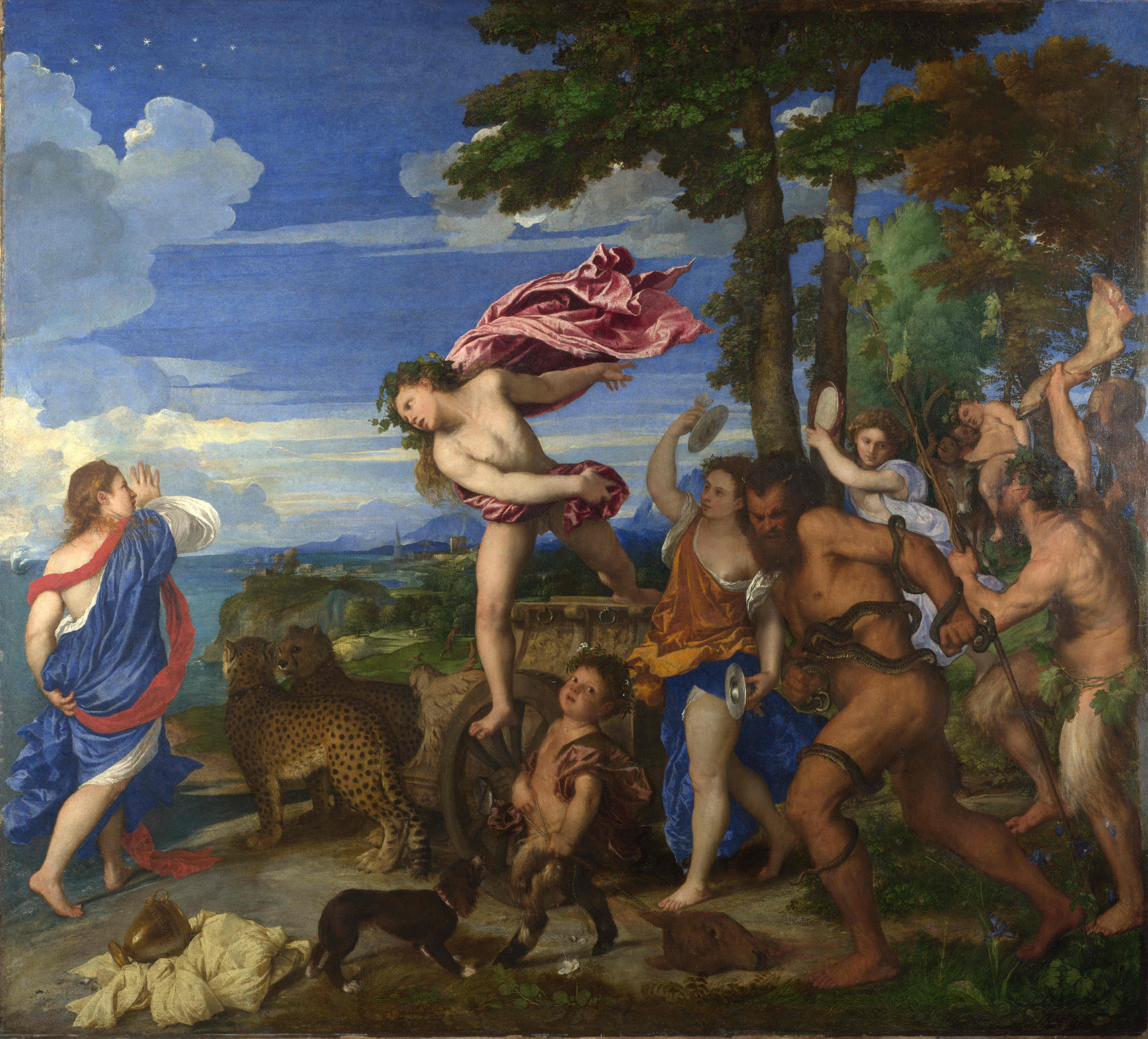
Bacchus and Ariadne
Titan
Greek Mythological figures & story
Ariadne has been deserted on an island by her lover, Bacchus (God of Wine) discovers her and falls in love with her. Incredible, asymmetrical composition with BALANCE. Constellation in upper left is representative of Ariadne’s fate
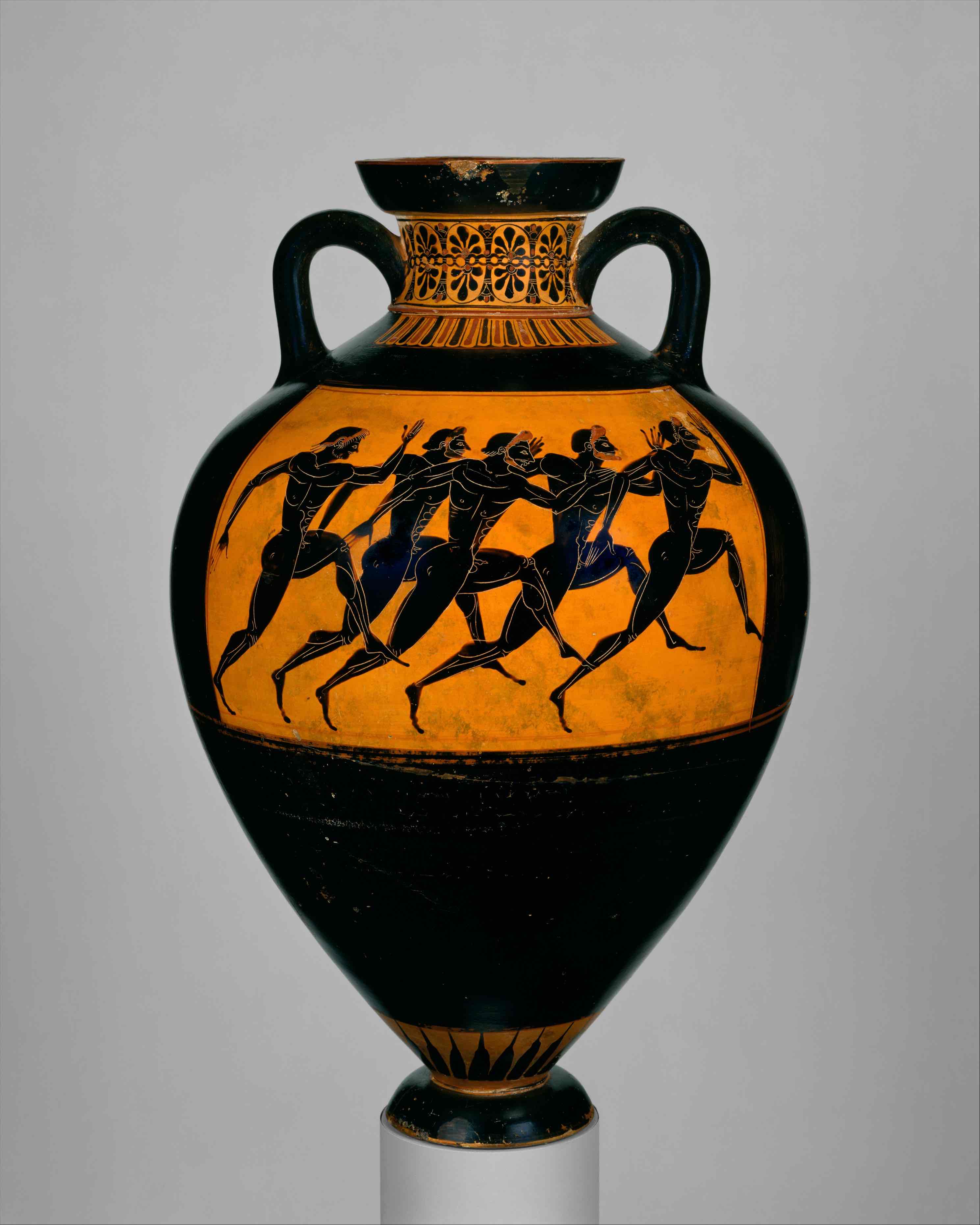
Terracotta Panathenaic prize amphora (AG)
Every 4 years there were games held at the panathenaic festival, in celebration of the Patron goddess Athena. When someone won a game at the festival they got these vessels in reward. On the other side of the vase, five foot runners are competing in a race and these athletes at the time would run nude to show the human body and all its beauty in action.
(Black- figure paintings) -
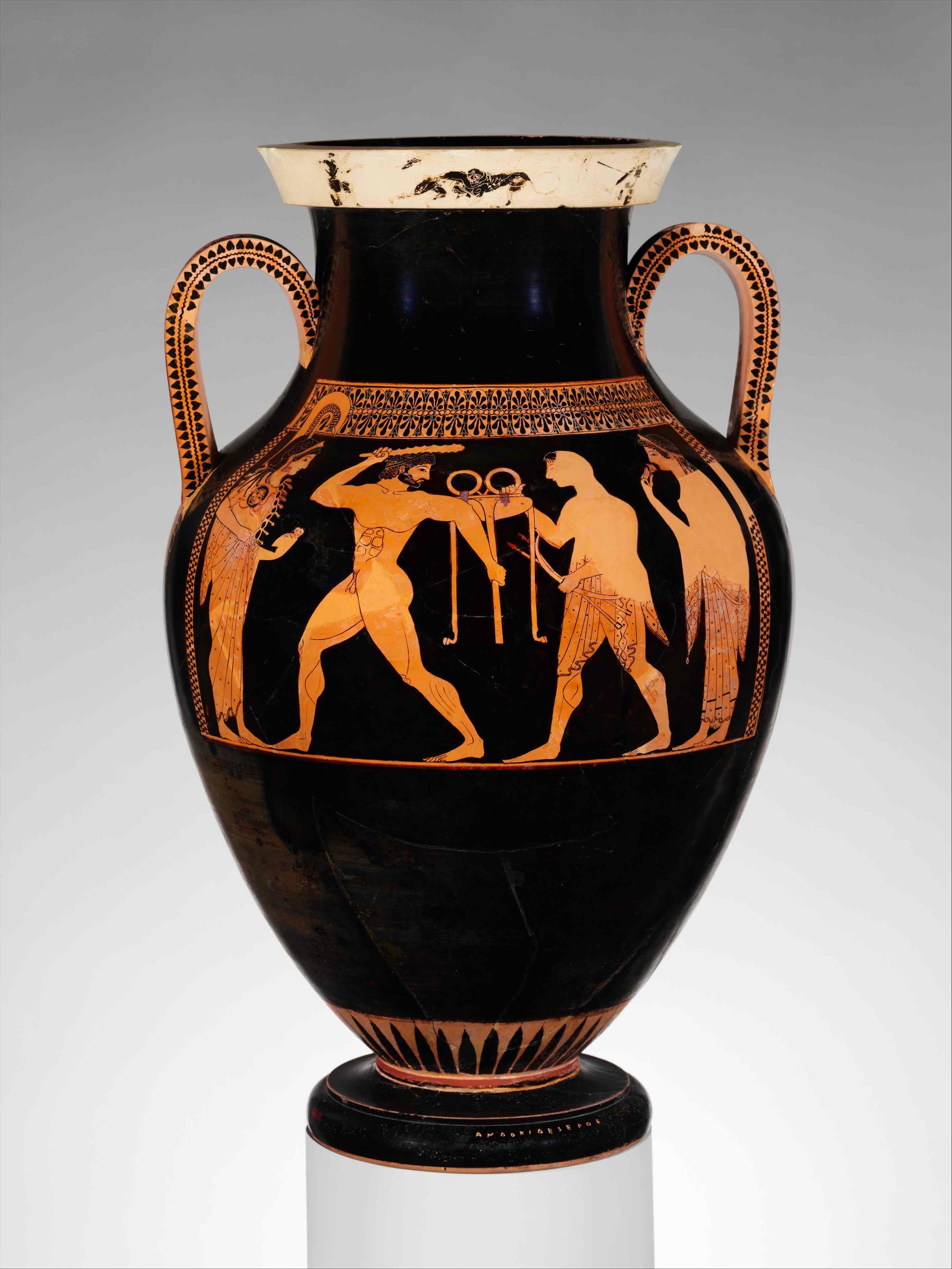
Terracotta amphora (jar)
( Red - Figure Painting) - In the center on the front of the vase is a bowl on three long legs, the tripod is a symbol of delpic, one of the greatest sanctuaries of the Greek world.
In rage Hercules stole the tripod from Delphic to set up his own oracle. This painting is when the Gods and Heroes were against each other on the front you can see Apollo holding his bow and arrow in one hand and the tripod in the other.
Standing on the other side of the tripod is Hercules. Hercules had killed a man and his punishment was a disease that came over him. He went to Delphic to find answers from Apollo to receive forgiveness for his crime and he did not get any answers; he was ignored.
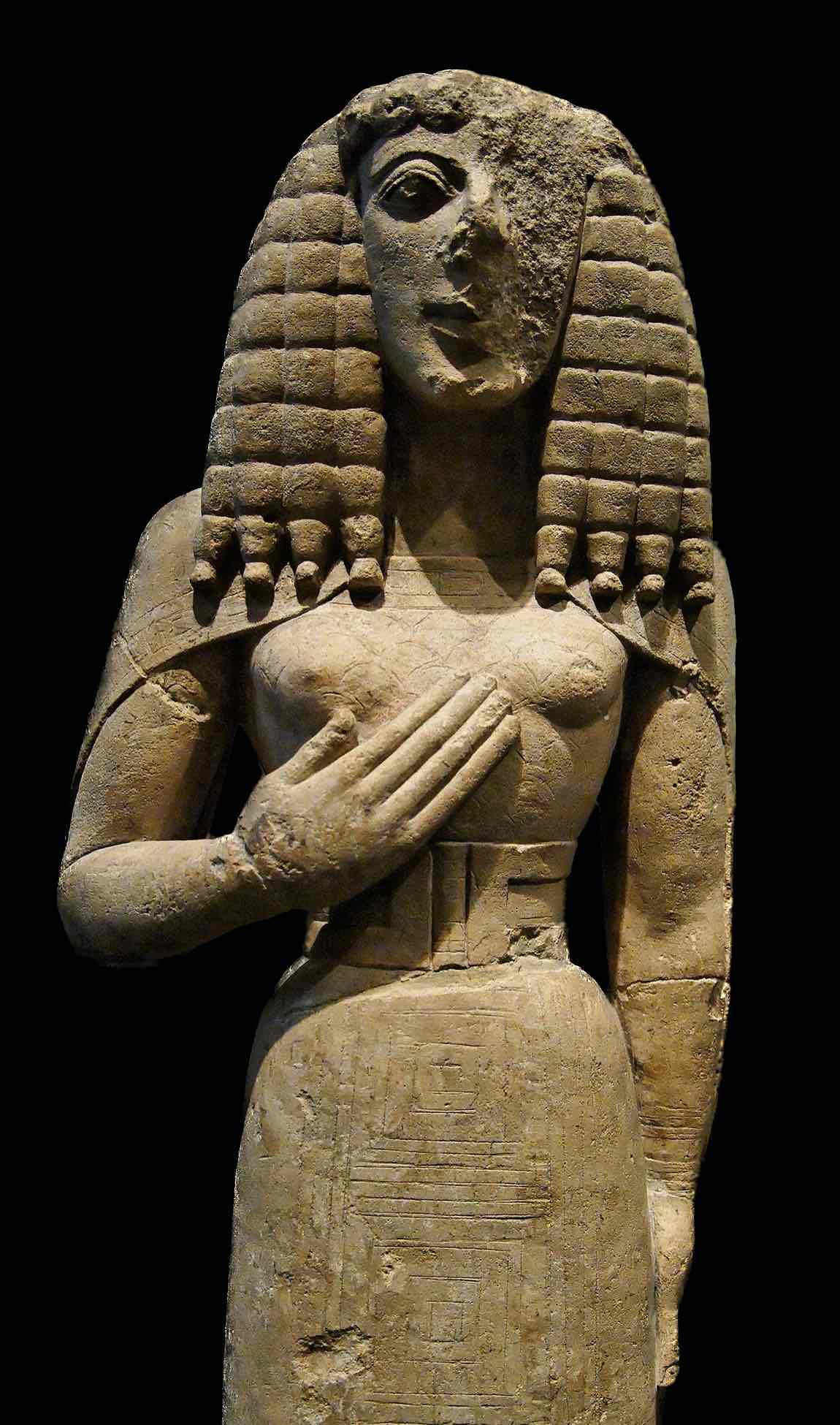
Lady of Auxerre (CA.650-625)
it is a Daedalic statue, found in the French city of Auxerre in the basement of a municipal museum. The formation (conjecture) she makes comes from a cemetery crete. Possibly a votive figure (a figure meant to honor gods). Some suggest she may be a goddess herself
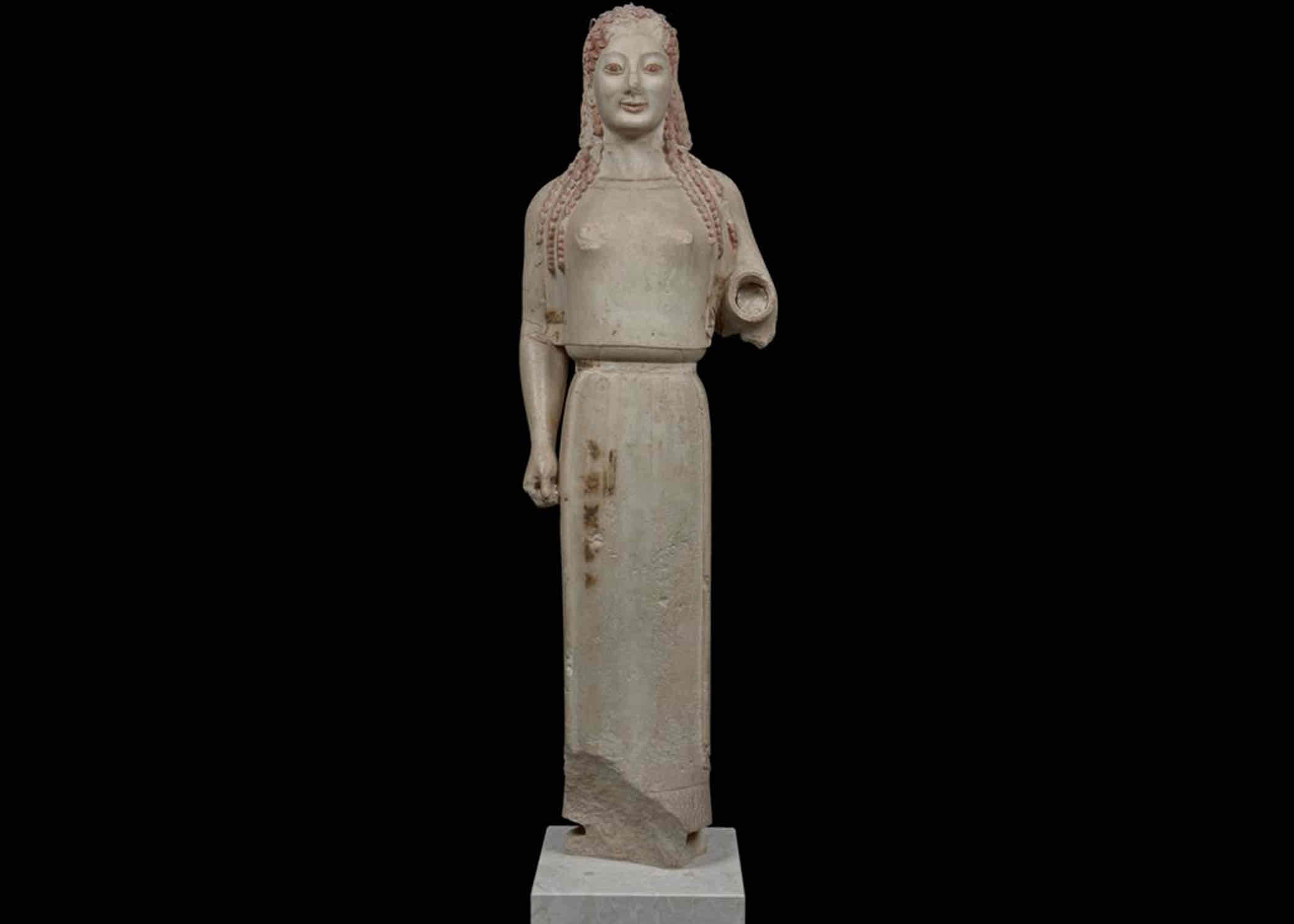
Peplos Kore C.530 BCE -
1.18 meters tall found in acropolis she is known as peplos kore because originally she was wearing a peplo which is a type of custom in greek was said to be a votive dedicated towards one of the greek goddess Artemis (goddess of hunt) was said to be holding bow and arrow.
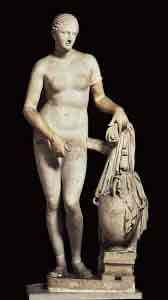
Aphrodite of Knidos-
Contrapposto - left leg is engaged and holds her weight while the other leg is bent. Prop is holding her arm to prevent breakage considered scandalous for the time. She looks as if she is ashamed of us looking at her.
Model for Venus de Milo

Venus De Medici -
1.5m tall. Based on Praxiteles Aphrodite of Knidos, found without a signature, preserved on the basis of an older Cleometens work.
People is a dolphin ridden by two cupids repeating aphoritdoitws love with the sea and love
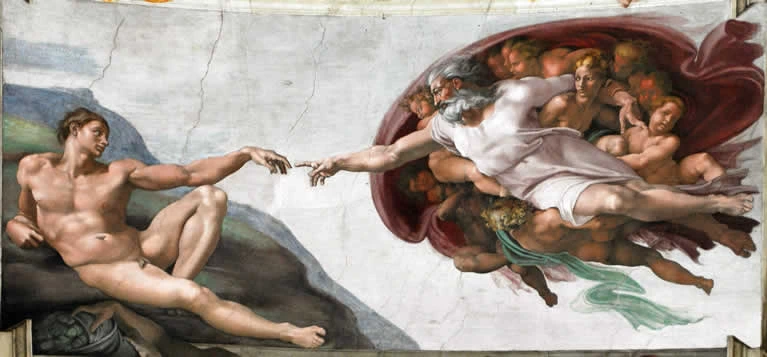
Ceiling of the Sistine Chapel
Creation of Adam
Here we see Adam nude while Gods right arm is outstretched to impart the spark of life from his own finger into Adam which represents the divine breath of life